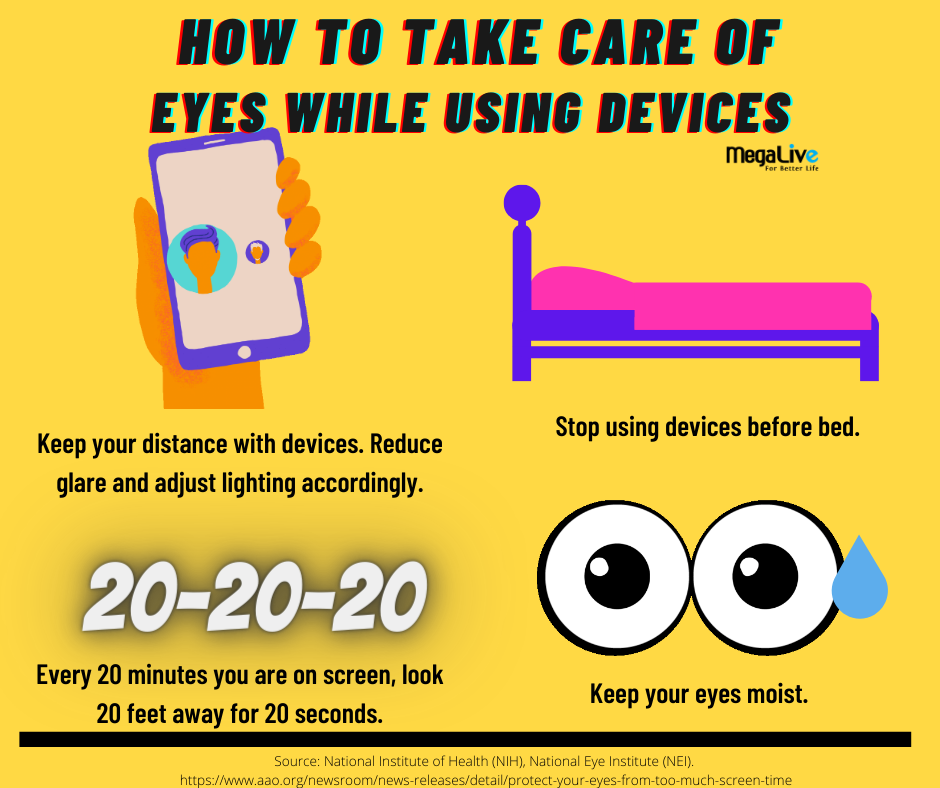Health Articles
Find out more about your health here from our health professionals!

Facts on Fiber
“Eat more vegetables and fruits to get your fiber!” You may have heard these words. But what is fiber, really? How it works to improve our health? Let us take a closer look on it!
Fiber is a type of carbohydrate that our body cannot digest undigested. Though most carbohydrates are broken down into sugar molecules but fiber cannot be broken down into sugar and thus it will pass through our body. These carbohydrates often considered beneficial in which mostly come from fruits, vegetables and legumes (1, 3, 6).
Fiber comes in two varieties, both beneficial to health (3):
Soluble fiber
Dissolves in water; absorb water to form a gel like substance that slow the digestion and cause you to feel full. They have been shown to decrease cholesterol and lower blood glucose. Common source of soluble fiber includes beans, oat bran, fruits and vegetables. It is also found in pysllium, a common fiber supplement.
Insoluble fiber
Does not dissolve in water; Increase fecal bulk and appear to help food pass more quickly through the digestive tract so it can be of benefit to those who struggle with constipation and irregular stools.
Facts About Fiber (3,4)
#1 Fiber aids in achieving healthy weight.
#2 Fiber fight diseases. It appears to reduce risk of developing various health conditions including heart disease, diabetes, constipation and breast cancer.
#3 Fiber helps to lower cholesterol.
#4 Fiber helps to regulate blood glucose.
#5 Recommended dietary fiber intake per day for all age group is 20-30g/day. However, if a person is not currently eating enough of fiber, he or she should increase his or her fiber intake slowly to avoid gas and bloating.

#6 More fiber needs more water. When eating a high fiber diet, be sure to drink at least eight or more glasses of water every day.
#7 Fiber aids in improving digestion by increasing stool bulk and regularity. A high-fiber diet may help reduce the risk of hemorrhoids and diverticulitis.
#8 Too much fiber is a bad thing. You may experience abdominal cramping, bloating, gas, constipation and even diarrhea.
#9 Fruit and vegetable peels are rich in several nutrients including fiber. Eating unpeeled fruits and vegetables keep you feel full longer due to its high fiber content. However, certain fruit and vegetable peels may be hard to consume or simply inedible. These peels are best removed and not eaten.
#10 Fruits and vegetable juice has less fiber than whole fruits and vegetable. This is because the skin is removed and thus it is more healthful to eat whole fruit and vegetable.
#11 Fiber cannot be cooked out.
Tips to Increase fiber intake (5,7)
Consume products that have whole grain listed as the first ingredients, high fiber content and low fat and sugar content.
Replace white rice, bread and pasta with brown rice and whole grain products.

Include legumes in your diet (beans, dried peas and lentils)
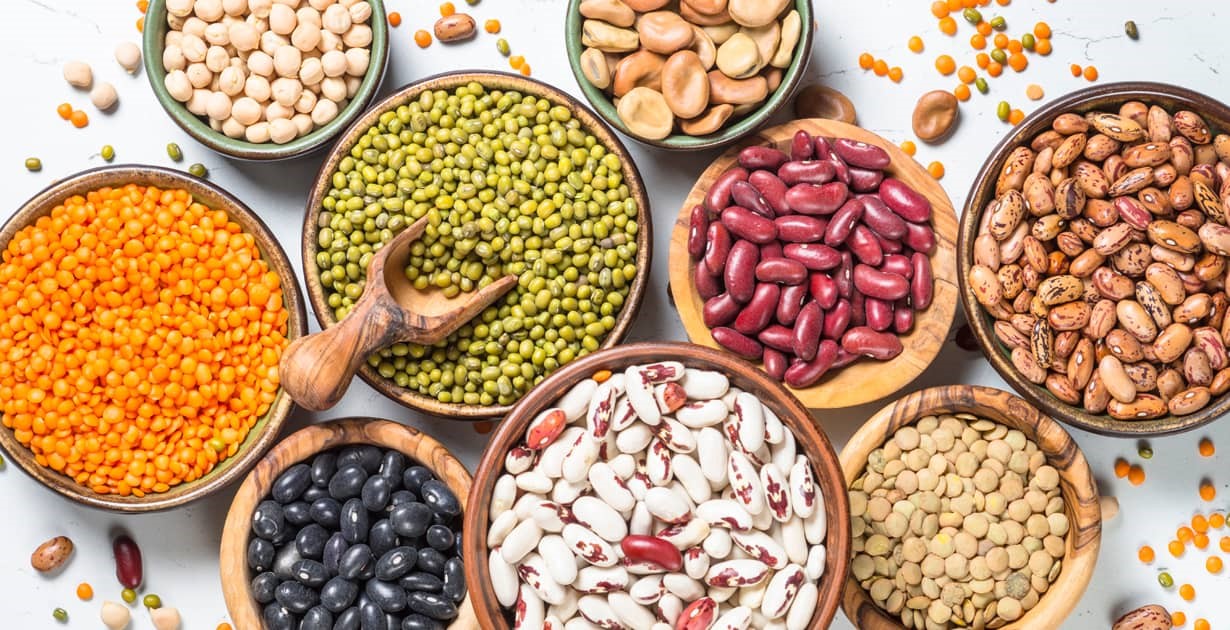
Eat unpeeled whole fruit and vegetables not juice.
Snack on fruits and vegetables
Take a fiber supplement (e.g psyllium)
In conclusion, fiber is an important dietary substance to your diet. This is because high fiber foods are also good sources of vitamins, mineral and antioxidants which offer many health benefits. Therefore, as one of the key ingredients to healthy eating, fiber is something you cannot skip.
References
-
Cleveland Clinic. 2019. Improving Your Health With Fiber. Available from https://my.clevelandclinic.org/health/articles/14400-improving-your-health-with-fiber [Accessed on 23 April 2020].
- Danielle, D. 2018. How much fiber is too much. Medical New Today. Available from https://www.medicalnewstoday.com/articles/321286#treatment [Accessed on 23 April 2020].
- Harvard University School of Public Health. (n.d.). Fiber. Available from https://www.hsph.harvard.edu/nutritionsource/carbohydrates/fiber/ [Accessed on 23 April 2020].
- Karin, L. 2016. 45 Interesting Facts about FIber. Fact Retriever. Available from https://www.factretriever.com/fiber-facts [Accessed on 23 April 2020].
- Kerri, A., J. 2016. 16 Easy Ways to Eat More Fiber. Healthline. Available from https://www.healthline.com/nutrition/16-ways-to-eat-more-fiber [Accessed on 23 April 2020].
- Mayo Clinic. 2018. Dietary fiber: Essential for a healthy diet. Available from https://www.mayoclinic.org/healthy-lifestyle/nutrition-and-healthy-eating/in-depth/fiber/art-20043983 [Accessed on 23 April 2020].
- My Health Ministry of Health. 2012. SERAT DAN KAWALAN DIABETES. Available from http://www.myhealth.gov.my/serat-dan-kawalan-diabetes/ [Accessed on 23 April 2020]

Red meat: Is it Good or Bad?

Meat refers to the muscle or organs of an animal consumed as food. In most parts of the world, it comes from animals raised on large industrial farms. As for red meat, it refers to meat from the source of pork, ham, and cuts from pig, lamb, and beef. Red meat is particularly said to have a link with various kinds of disease, such as heart disease and cancer; the question is, is this true?
Well, this statement is partially true. First, there are various kinds of red meat on the market. There is lean meat (meat without its fat), meat with its fat, and processed meat. Processed meat refers to meat that has undergone processes such as salting, curing, fermenting, smoking, and other processes to enhance flavour or improve preservation. Processed meats include ham, salami, bacon, and sausages such as frankfurters and chorizo. Certain minced meats on the market also undergo this kind of processing, which makes them processed foods as well.
Meat itself, referring to lean meat, is a healthy food. It is a good protein source and contains micronutrients such as zinc, vitamin B12, and iron. Iron in meat is easier to absorb, or, in other words, has higher bioavailability, as compared to iron from plant-based foods. Lean meat is also part of the food that is recommended to be eaten in the Malaysian Food Pyramid.

Recommended meat consumption
It is advised to eat 1 to 2 servings of either poultry, meat, or legumes and 1 serving of fish each day, as stated in the food pyramid's section on fish, poultry, meat, and legumes. This is so because the main takeaway from the Malaysian Dietary Guidelines (MDG) is to eat a variety of foods in moderation and with balance. Therefore, it is advised to eat food from a variety of sources, such as foods containing protein, which can come from fish, meat, poultry, and eggs. The protein source for dinner must therefore be meat, poultry, or eggs if you received your protein for lunch that day from a fish source. Another question comes up: how much constitutes one serving?
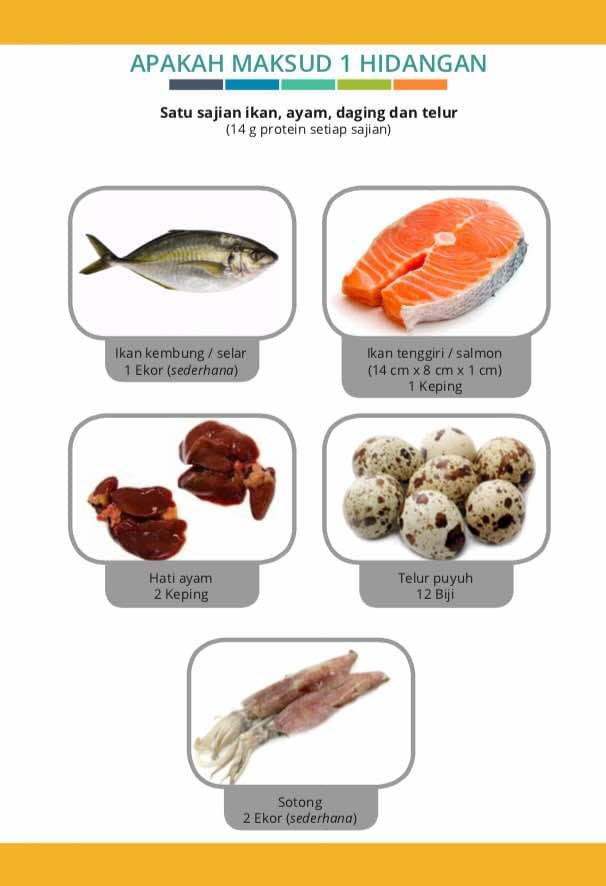
Example of a serving size of protein.
Serving is loosely translated into ‘sajian’ or ‘hidangan’ in Bahasa Malaysia; thus, the picture above shows how much per serving of protein there is. As for meat, 1 serving of meat is about 2 matchboxes worth of meat. For fish, a medium-sized fish is equivalent to 1 serving, while for chicken, one part of the chicken, such as a drumstick, is considered 1 serving of chicken. As for eggs, 1 egg is considered a serving of protein.
As mentioned earlier, it is not advisable to consume protein from the same source, so it is also not advisable to consume meat every day, since we have protein-based foods from a variety of sources that will give different kinds of nutrients as well, such as ‘tauhu’, ‘tempeh’, eggs, seafood, and many more.

The picture below shows an easy way to know how much you should consume for carbohydrates, vegetables, fruits, and protein just by using your hands.
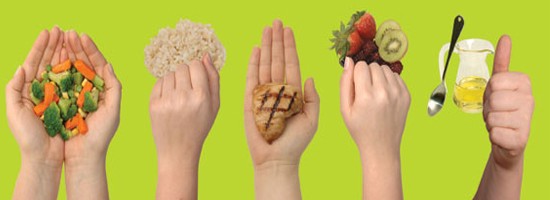
The study mostly found out that lean meat has various positive outcomes on individual health, especially for those with strength training exercises like athletes, as compared to if they consumed food from carbohydrates sources like pasta or rice, their muscle growth would be much slower. Another meta- analysis study that focused on the consumption of lean red meat (less than 0.5 servings per day) noted that the consumption of lean red meat does not negatively affect blood lipids or blood pressure. Which means the consumption of lean red meat does not impose a risk of heart problems, provided it is consumed within the recommended intake.
However, there are also studies that indicate that the consumption of red meat can impose health problems, such as that its saturated fat can lead to colon and breast cancer; the higher the cooking temperature for meat, the more carcinogenic it is; and the heme that is found in meat when cooked can produce compounds that can damage the cells, leading to cancer.
Which is why, when it comes to food, there is not just healthy food and unhealthy food; it is more than that. It depends on the health status of the individual consuming it, the cooking method, and various other factors.
In conclusion
Limiting red meat and processed meat to no more than 70g per day, or 2 servings per day, is the best. Consume protein-based foods from other sources of protein as well, not only red meat and processed meat, just as recommended by the Malaysia Dietary Guidelines (MDG).
References
- Red Meat (2019). https://www.diabetes.co.uk/food/red-meat.html (Accessed on August 4, 2020).
- World Cancer Research Fund. Limit red and processed meat. https://www.wcrf.org/dietandcancer/recommendations/limit-red-processed-meat#:~:text=Dietary%20goal,%2C%20if%20any%2C%20processed%20meat. (Accessed on August 4, 2020).
- The truth about red meat. https://www.webmd.com/food-recipes/features/the-truth-about-red-meat#2 (Accessed on August 4, 2020).
- Is red meat bad for you, or good? An Objective Look. https://www.healthline.com/nutrition/is-red-meat-bad-for-you-or-good (Accessed on August 4, 2020).

Is Fat Unhealthy?
Many diseases and health complications are believed to be linked to fat consumption, including obesity, diabetes, heart problems, and cancer. However, fats also play crucial roles in our bodies, such as aiding in the transport and absorption of fat-soluble vitamins A, D, E, and K. Fats also act as insulators for vital organs and as shock absorbers. With these functions in mind, it begs the question: Is fat truly the culprit behind various diseases? (1,2,3).
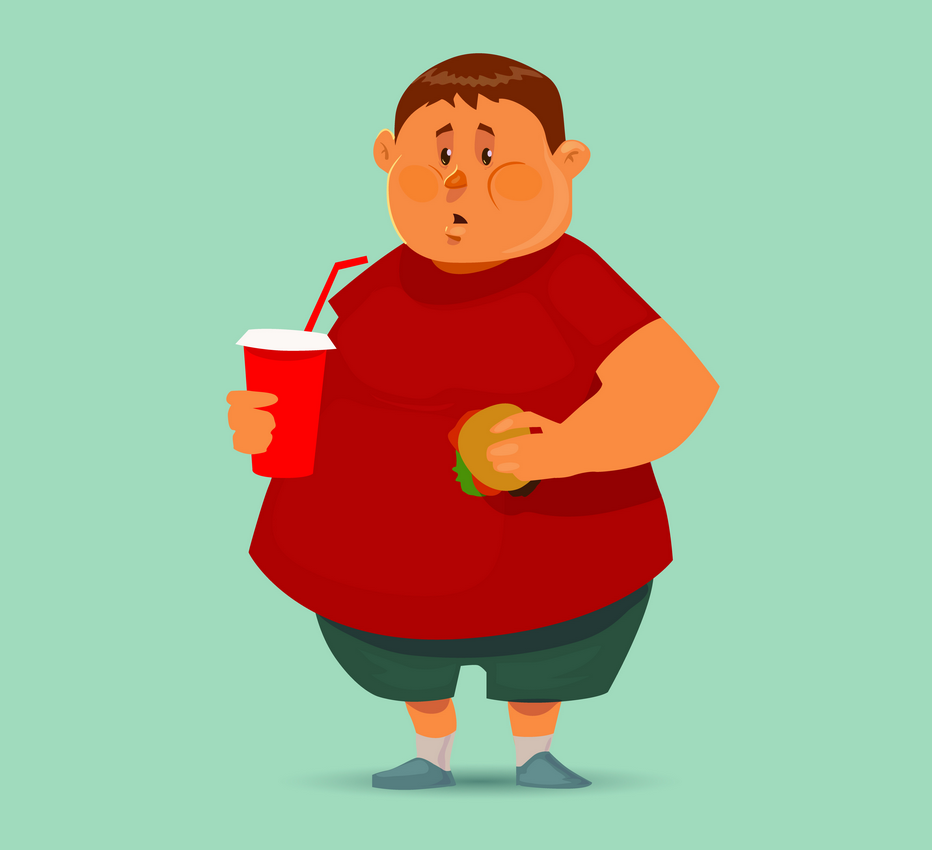
History of Dietary Fat Recommendations (4)
The confusion surrounding dietary fat intake has its roots in the past, as nutrition scientists struggled to effectively communicate their findings from nutrition studies to the public. Previously, the classic diet-heart hypothesis vilified dietary fat due to two key observations from observational studies and randomized controlled trials.
- Controlled feeding trials showed that dietary saturated fatty acids and cholesterol elevated levels of serum total cholesterol and low-density lipoprotein (LDL) cholesterol (considered "bad" cholesterol).
- Dietary fat intake was associated with increased levels of serum total cholesterol and LDL cholesterol, which were predicted factors for cardiovascular disease.

Current Insights on Dietary Fat Intake (4)
Past research focused heavily on singular causal outcomes, but contemporary extensive research has illuminated multiple pathways contributing to the development of cardiovascular diseases. These pathways include factors beyond total cholesterol intake or LDL levels, such as smoking, obesity, diabetes mellitus, hypertension, and more.
As a result, recommendations for dietary fat intake among individuals with cardiovascular disease and those seeking to prevent it need to evolve accordingly.

Types of Fats and Cholesterol, Along with Dietary Recommendations (4,5,6)
To comprehend dietary recommendations for fat and cholesterol intake, let's first explore the different types. Saturated fat, often labeled as "bad" fat, is solid at room temperature. It can contribute to weight gain and increased levels of LDL cholesterol in the bloodstream. Sources high in saturated fat include meat, chicken skin, margarine, and fatty dairy products.
Unsaturated fats, considered "good" fats, are divided into monounsaturated and polyunsaturated fats. They can elevate HDL (good cholesterol), lower LDL (bad cholesterol), reduce blood pressure, and decrease the risk of cardiovascular diseases. Examples of monounsaturated fats are palm oil, canola oil, olive oil, and cashew nuts. Polyunsaturated fats include corn oil, sunflower oil, and fish oil. For optimal results, studies suggest a 1:1 ratio blend of these two types of oils in cooking, such as combining palm oil and sunflower oil.
Trans fat, the least desirable type, forms during hydrogenation when liquid fats turn solid. Trans fat, or trans-fatty acids, are commonly found in processed and frozen foods to prolong shelf life. Consumption of trans fat should be limited, as it's associated with elevated LDL cholesterol levels, increased cardiovascular disease risk, and certain cancers. Sources of trans fat include margarine, fried foods cooked in unsaturated fats like sunflower oil, as well as ready-to-eat and canned foods.

In Conclusion (4,5)
While there isn't a specific universal standard for each fat type due to various factors, the World Health Organization (WHO) generally recommends fat intake between 20% to 30% of total calories. In Malaysia, this translates to about 45g to 67g of fat, roughly 3 to 5 tablespoons of oil (based on a 2000 kcal/day diet).
As consumers, it's vital to distinguish health-promoting fats from detrimental ones and limit the intake of harmful fats to cultivate a healthy eating lifestyle.
Practical steps include choosing fresh poultry or seafood over processed foods like tempura or finger foods. Cooking methods matter greatly; opt for steaming, baking, boiling, and grilling. When dining out, consider that many eateries reuse cooking oil, making healthier choices paramount.
Limiting trans-fat intake is crucial. Apart from processed and frozen foods, restrict consumption of high-cholesterol items such as mayonnaise, animal organs, and fish heads.
Being mindful of what you fuel your body with is as important as feeding your mind with positive thoughts. Nourish both body and mind with beneficial nutrients by selecting healthy fats.
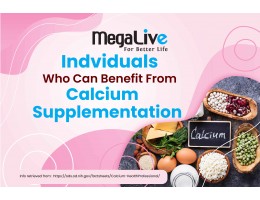
Calcium Supplementation, Who Needs it?
Calcium is among very common micronutrient heard by public and milk advertisement is the contributor to this. Through this many people know that calcium is very important for bone and teeth. Calcium can be found in various food products nowadays not only milk. It has becoming partly marketing strategy for food company to incorporate calcium in their food product especially if the target consumer is children or elderly since many people know that calcium is vital for these two groups, children, and elderly.
Function of Calcium?
Body needs calcium for strong bones and teeth. Calcium is also required to carry out important function such as for muscle to move, for nerves system to carry messages between brain and body parts, for blood vessels to move blood throughout the body, and for body to help release hormones and enzyme that affect almost every function in the human body (1,2,3).
How much calcium is needed?
Normal adult need about 1000 mg of calcium daily, however there are certain condition which require to consume up to 1300 mg of calcium daily such as for pregnant lady, lactating mother, post-menopausal women, and man who is above 70 years old of age (1,2,4).
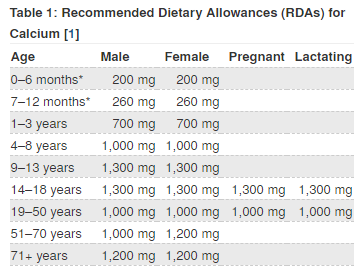
Calcium and diet
Body does not produce calcium, so it needs to be consumed from foods. Luckily, calcium can be found in variety of foods such as dairy products, dark leafy vegetables, fish, and many other fortified food products (1,2,3). As for our local food products sardine, anchovies, cencaluk, budu, tofu, tempeh, broccoli, kalian, and tapioca leaves are among food that is high with calcium (4).
It is also important to take note that in order to absorb calcium, body needs vitamin D. Only a few foods containing small amount of natural vitamin D, such as egg yolks and salmon with bones. Mostly, we rely on the exposure to sunlight in order to get enough vitamin D, of course in Malaysia the country with sun all year long have no problem with this! However, as currently we are still in the so to say the ‘lockdown’ phase thus it is very important to remind everyone to get the sunlight every day at least 20 minutes for its vitamin D and calcium absorption (1,2,4).
Though all the foods stated above are easily found, but there are conditions which hinder individuals from getting enough calcium from diet thus require it from calcium supplementation.
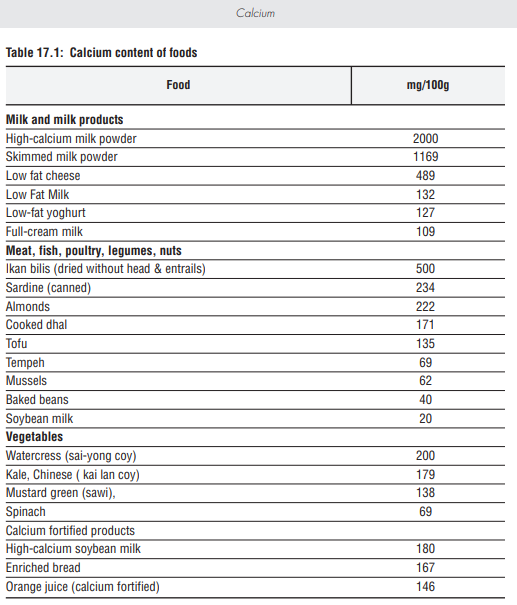
Condition for calcium supplementation
Before considering calcium supplement, individuals must understand how much calcium needs by the body (stated above). Then individuals must seek help from nutritionist, dietitian, pharmacist, or doctors, where they will assess your calcium consumption from your diet through diet recall. If the calcium intake falls short thus you need to top up calcium from supplement.
Hypertensive individuals and diet with large amounts of sodium.
Several literature reviews on topic of total calcium intake from food and supplements with regards to hypertension suggested that there is possible link to lowering high blood pressure. However, since most of the study design have small number of subjects, and were tested with people from different background, and not to mention possess various kind of biases thus making it difficult for scientist to draw conclusion (1,2).
However, a large study subject (Women’s Health Study), found out that calcium intake was inversely associated with risk of hypertension in middle-aged and older women, in terms of preventing hypertension (1,2).
The consumption of high sodium food lead to more calcium excretion through the urine, which will lead to constriction of blood vessels, which in the end resulting in high blood pressure. Drinking large water after consuming salty food, is not enough, as it may be making blood pressure return to its slightly normal condition, but it is not helping with the loss of calcium (1,2,5).
Pregnant and lactating mother
Often times, pregnant women is being reminded of how important is folic acid for the baby, even from the trying to conceive period, healthcare providers already advise them to consume folic acid, in order to prevent spina bifida to the baby. However, calcium is as well very important for mothers throughout pregnancy and lactating period especially for mother who is lack of calcium from diet (1).
Several professional organizations recommend calcium supplements during pregnancy for women with low calcium intakes to reduce the risk of preeclampsia (a condition where gestational hypertension always occur). For example, the American College of Obstetrics and Gynaecology (ACOG) states that daily supplementation with 1,500–2,000 mg calcium may reduce the severity of preeclampsia in pregnant women who have calcium intakes less than 600 mg/day. Similarly, the World Health Organization (WHO) recommends 1,500–2,000 mg calcium for pregnant women with low dietary calcium intakes, particularly those at higher risk of gestational hypertension (1).
As for normal healthy mother, the consumption of calcium is especially important during lactating period, mother may notice symptoms such as cramps which indicates lack of calcium during pregnancy and lactation period. Also if a mother is on iron supplementation as well, it is advisable to not consume both at the same time, it is best to gap several prior the consumption of these two since it can interfere with the absorption (1,2).

Throughout the lifespan, bones are constantly being broken down and built up in a process known as remodelling. Bone cells called osteoblasts build bone, while other bone cells called osteoclasts break down bone if calcium is needed. In healthy individuals who get enough calcium and physical activity, bone production exceeds bone destruction up to about age 30. After that, destruction typically exceeds production. This is sometimes called “negative calcium balance,” which can lead to bone loss. Women tend to experience greater bone loss than men later in life due to menopause, a condition that lowers the amount of hormones that help to build and preserve bone (5).
Getting enough dietary calcium at all ages may help to slow the degree of bone loss, but calcium intakes at any level are not known to completely prevent bone loss. Calcium is less easily absorbed at later ages, and therefore eating a very high amount of calcium will not always resolve the problem (5).
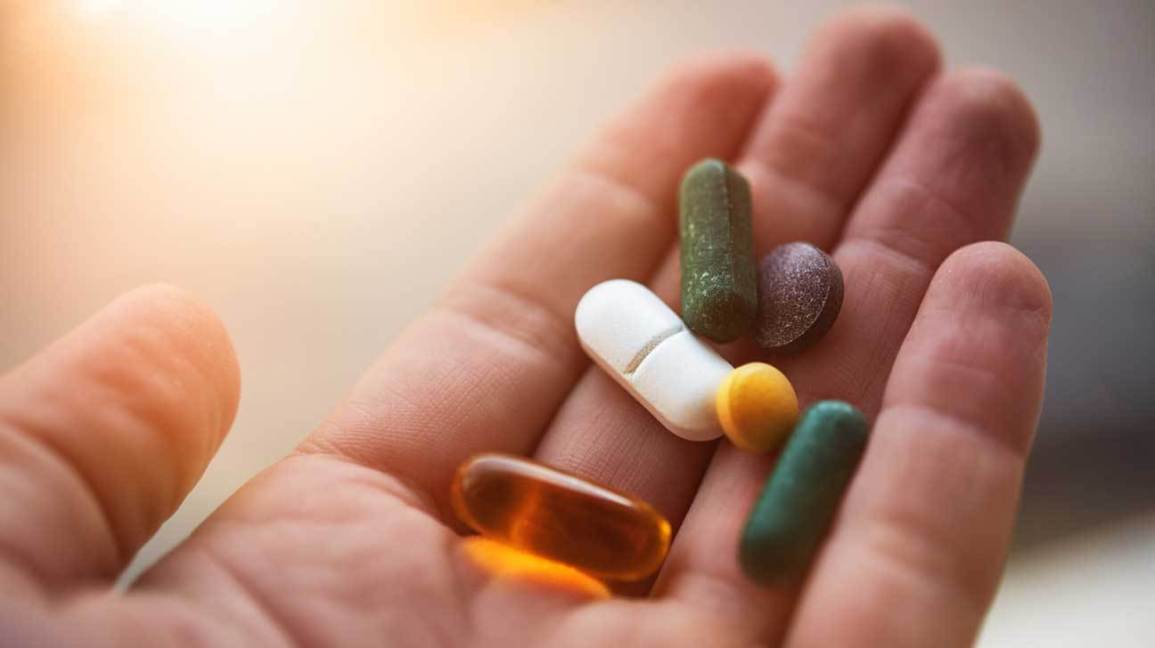
Individuals with lactose intolerance and limit dairy products
Individuals with lactose intolerance usually, is unable to consume food that has high amount of calcium especially if it come from milk and dairy source of food. Thus, lactose intolerance individuals need to consume it form dark leafy vegetables and soy-based product. However, in most cases the consumption is not enough or individuals with lactose intolerance consume not enough vegetable rich with calcium or other food source rich with calcium, thus for this specific population calcium supplementation is needed either from fortified food product such as ready to eat cereals or from calcium supplementation tablet itself.
Individuals receiving treatment on certain medication in the long period
Well, there are certain medication which can influence the absorption of calcium. Medication such as to treat osteoporosis (bisphosphonates), antibiotics (fluroquinolone), medication to treat low thyroid problem (levothyroxine), anticonvulsant (phenytoin), diuretic medication (Lasix and bumex), antacids containing aluminium and magnesium and also glucocorticoids (prednisone). These are all either causing calcium loss in the urine or cause calcium depletion in the bone. Thus, if you are on these medication, it is advisable to take calcium rich foods four hours prior or after the intake of medication, so that it would not interfere with the absorption of calcium, it is also best if you consume calcium supplementation if you do have poor intake of calcium rich food as well (2).
In conclusion, in these situations, calcium supplements may help you meet your calcium requirements. Talk with your doctor or dietitian about whether calcium supplements are right for you.
References
- National Institute of Health (NIH). Department of Health and Human Service. Calcium. Fact Sheet for Health Professionals. https://ods.od.nih.gov/factsheets/Calcium-HealthProfessional/ (Accessed on November 18, 2020).
- National Institute of Health (NIH). Department of Health and Human Service. Calcium. Fact Sheet for Consumers. https://ods.od.nih.gov/factsheets/Calcium-Consumer/ (Accessed on November 18, 2020).
- Mayo Clinic. Nutrition and Healthy Eating. Healthy Lifestyle. Calcium and calcium supplements: Achieving the right balance. https://www.mayoclinic.org/healthy-lifestyle/nutrition-and-healthy-eating/in-depth/calcium-supplements/art-20047097 (Accessed on November 18, 2020).
- Ministry of Health (MOH). National Coordinating Committee on Food and Nutrition. Recommended Nutrient Intake (RNI): A Report of the Technical Working Group on Nutritional Guidelines (2017).
- Harvard T.H. Chan. School of Public Health. The Nutrition Source. Calcium. https://www.hsph.harvard.edu/nutritionsource/calcium/ (Accessed on November 18, 2020).

Grapeseed Extract and its benefits
Grape seed extract (GSE) is derived naturally from grape seed and is commonly used in dietary supplements for a variety of purposes. It is created by removing, drying, and pulverising the bitter tasting grape seeds. It contains a lot of antioxidants like phenolic acids, anthocyanins, flavonoids, and oligomeric proanthocyanidins complexes (OPC). Grape seed extract, in fact, is regarded as one of the best sources of proanthocyanidins. As a result, grape seed extract provides numerous benefits to the human body, including disease prevention, protection against oxidative stress, tissue damage, inflammation, and many more. In this article, we will look in depth at the potential health benefits of grape seed extract (GSE) based on studies:
Wound healing activity and antioxidant properties.
Numerous studies have shown that grape seed extract contains a high level of antioxidants. Using punctured wounded mice, researchers discovered that mice treated with GSE in the wound affected area grew tissue faster than mice treated with only normal saline. Another difference between GSE-treated mice and placebo-treated mice was more organized tissue formation and a higher rate of collagen deposition.
Topical application of 2% GSE cream in the area of a post-surgery surgical wound heals the wound completely in an average of 8 days, compared to 14 days for placebo. This is due to GSE's vascular endothelial growth factor (VEGF) properties, which promote the regeneration of damaged blood vessels while increasing the amount of free radicals present at the wound site. Free radicals aid in the killing and removal of pathogenic bacteria and endotoxin from the site, as well as in the healing of wounds
Apart from wound healing and skin health properties, it also has anti-ageing properties. GSE proanthocyanidins delay skin ageing by reducing lipid oxidation on the skin structure.
Cardiovascular and antihypertensive properties.
Cardiovascular disorders (CVD) are among the major problems that arise due to modern, unhealthy lifestyles, which are the primary cause of death worldwide. It is a disorder that affects the condition and function of the heart and blood vessels in general. Changes in these two can result in cardiac arrest, heart stroke, hypertension, chest pain, and other complications. Studies show that GSE may prevent atherosclerosis (a condition where there is a build-up of fats, cholesterol, etc. in the blood vessel walls, which can restrict blood flow), inhibit or limit the oxidation of LDL (bad cholesterol), reduce inflammation, inhibit platelet aggregation, and lower blood pressure. It lowers blood pressure by suppressing oxidative stress and inhibiting the angiotensin-converting enzyme (ACE) and nitric oxide, which mediate vasodilation, hence making the constricted blood vessels dilate and improving blood pressure.

Antimicrobial activity
GSE has been shown to have antimicrobial properties; for example, when applied topically, resveratrol in GSE increases the production of cathelicidin, which inhibits the growth of Staphylococcus aureus. In another study, quercetin, caffeic acid, and quercetin-3-0-rutinoside in GSE were responsible for the inhibition of Listeria monocytogenes. It is also worth noting that GSE had the highest inhibition activity against almost all Listeria species. The review on the benefits of GSE also reported that the antimicrobial effect of GSE is attributed to changes in cell morphology and DNA content.
Cosmetic and nutraceuticals
Skin ageing is a natural process which occurs due to the external and internal factors involving genetic, hormonal, and environmental factors. GSE is rich in proanthocyanidin help to reduces the lipid oxidation of cellular structure of the skin and inhibit the production of free radicals. A study was carried out in which the anti-ageing effect of GSE was investigate. The study concluded that GSE has a promising role as an anti-ageing compound.
GSE help skin structure by strengthening the collagen-based tissue (by increasing the collagen cross links). It also increases the synthesis of collagen and the conversion of collagen from soluble into insoluble one.
In conclusions,
GSE has various benefits to health due to its high antioxidant properties, it is able to scavenge the free radicals which an essential feature that could help with various body functions.
References
- National Institute of Health (NIH). National Centre for Complementary and Integrative Health (NICCH). Grape Seed Extract. https://www.nccih.nih.gov/health/grape-seed-extract (Accessed on March 15, 2021)
- 10 Benefits of Grape Seed Extract, Based on Science. https://www.healthline.com/nutrition/grape-seed-extract-benefits (Accessed on March 15, 2021).
- Gupta, M., Dey, S., Marbaniang, D., Pal, P., Ray, S., & Mazumder, B. (2020). Grape seed extract: Having a potential health benefit. Journal of food science and technology, 57(4), 1205-1215

Differences between Omega 3, 6, and 9

The infographic above explains the types of good and bad fats. But what about the differences between Omega 3, 6, and 9? All these three fats can be considered good fats, but there are certain things that distinguish them from one another.
MUFA or Omega 9
Monounsaturated fatty acid (MUFA), also known as omega 9, is named because of the double bond position, which is on the ninth position from the omega end. It is a type of fat that is found in vegetable and animal fats such as canola oil, sunflower oil, olive oil, and nuts. Unlike polyunsaturated fatty acids (PUFA), omega-9 is a non-essential fat, which means the body is able to produce these types of fat. However, there are also benefits when it is obtained from food, such as reducing the risk of cardiovascular disease and stroke, reducing LDL cholesterol (bad cholesterol), increasing HDL cholesterol (good cholesterol), and helping to eliminate plaque buildup in the arteries, which can cause heart attacks and strokes.
PUFA or Omega 3 & Omega 6
Polyunsaturated fatty acids (PUFA) can be divided into Omega 3 and Omega 6. The difference between these two is that the position of the double bond for Omega 3 is in the third position from the end, whereas for Omega 6, it is in the sixth position from the end.
Among the types of Omega 3 with extensive scientific research are eicosapentanoic acid (EPA), docosahexaenoic acid (DHA), and alpha-lipoic acid (ALA). The difference between these three types of Omega-3 fats is the number of carbon atoms: 18, 20, and 22 for ALA, EPA, and DHA, respectively. ALA can be converted to EPA and then to DHA, but the conversion, which usually occurs in the liver, is less than 15%, which is why it is recommended to consume EPA and DHA directly from foods or dietary supplements. ALA is present in plant oils such as flaxseed, soybean, and canola oils. DHA and EPA are present in fish, fish oils, and krill oils. But the DHA and EPA in krill oil do not originate from krill but rather from the ingestion of microalgae.
Whilst, among the types of Omega 6 are linolenic acid (LA) and arachidonic acid (AA), The difference between these two is the position of the double bond in the omega-6 fatty acid chain. Linolenic acid (LA) is the same as ALA; it is an essential fatty acid that cannot be produced by the human body. Sources of food with LA are soybean oil, corn oil, safflower oil, peanut oil, cottonseed oil, and rice bran oil. While the sources of food for AA are peanut oil, meat, eggs, and dairy products,
Omega 3 and Omega 6 are beneficial for cardiovascular diseases because they can help manage cholesterol levels, triglycerides levels, and blood pressure levels. There is also certain supporting data that states that it can help with reducing weight and waist size, improving infant brain development in the foetus, and fighting inflammation. However, other than for cardiovascular health, the finding is quite inconclusive. But as for Omega 3 and 6 (PUFA) and heart health, the American Heart Association (AHA) recommends that 8–10% of calories should come from PUFA, as there is evidence that eating more PUFA—up to 15% of daily calories—in place of saturated fat can lower the risk of heart disease.
The diagram below shows the comparison between these three types of good fat:
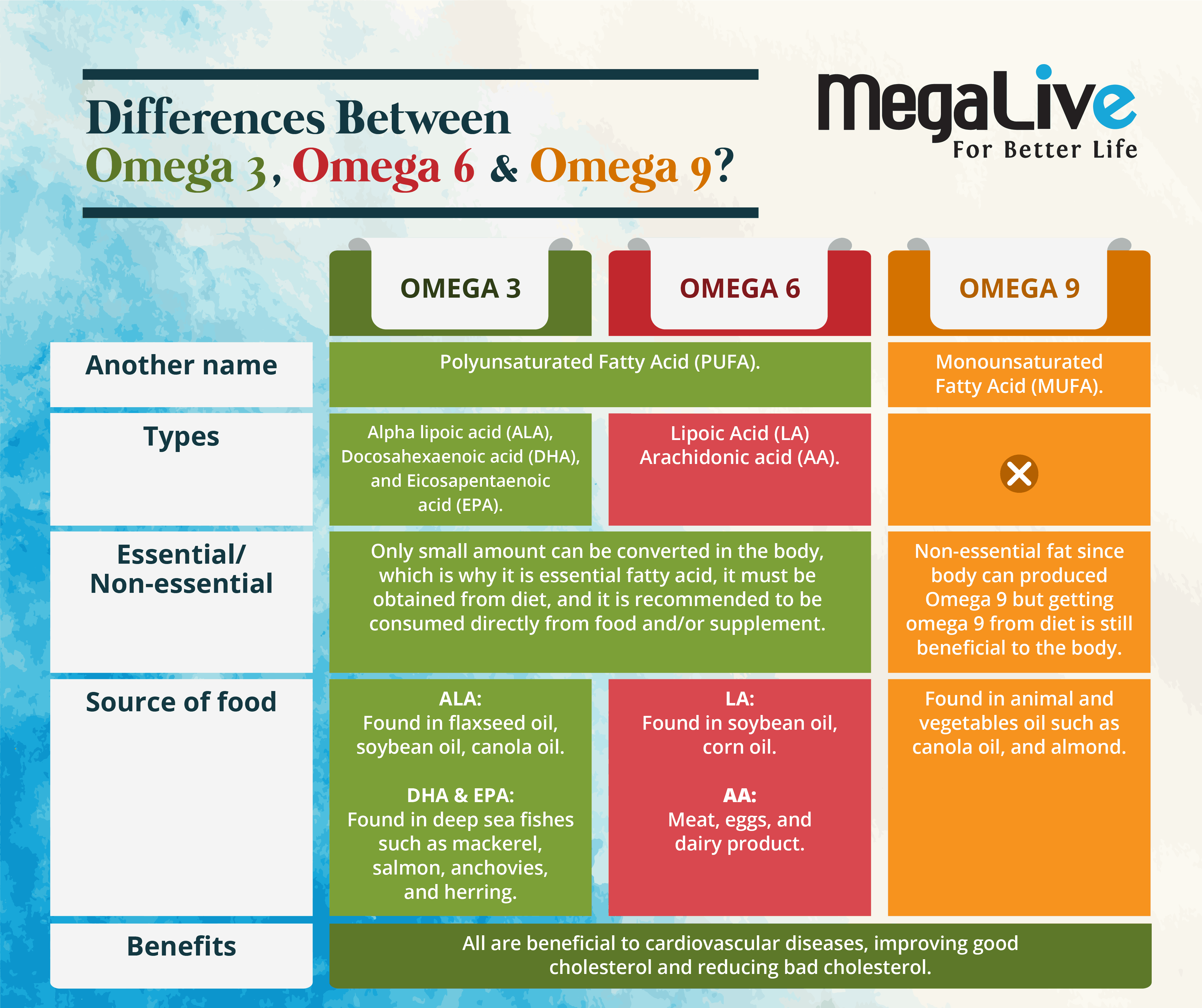
All in all, Omega 3, 6, and 9 are beneficial for cardiovascular health, as they can help with lowering LDL levels (bad cholesterol), increasing HDL levels (good cholesterol), and helping with blood pressure levels. Several other studies also mentioned that certain good fats can help with inflammatory diseases such as joint pain and skin diseases such as eczema. However, consumption of all these fats must be in balance since overconsumption of them can have serious health effects! However, replacing bad fat (or even good fat) with refined carbohydrates does not help your health either. It is so important to note that everything must be in balance, and consuming healthy food is not about one type of food only; it is about variety, quality, and the food source as well!
References
-
Ministry of Health Malaysia (MOH). Hyperlipidemia.
-
Harvard T.H Chan. School of Public Health. Types of fat. https://www.hsph.harvard.edu/nutritionsource/what-should-you-eat/fats-and-cholesterol/types-of-fat/
-
Harvard T. H Chan. School of Public Health. Saturated fat or not does type of fat matter. https://www.hsph.harvard.edu/nutritionsource/2014/05/15/saturated-or-not-does-type-of-fat-matter/
-
Healthline. Omega 3, 6, and 9. https://www.healthline.com/nutrition/omega-3-6-9-overview#omega-6
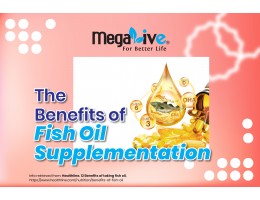
Benefits of Fish Oil Supplementation
Consumption of fish is important as it is a good source of protein. It is recommended to consume one fish per day, according to the Malaysian food pyramid. This is because the consumption of fish in Malaysia is rarely equated with a risk of contamination with mercury, etc., unlike in western countries. This might be due to the types of fish and sizes of fish that we are consuming here as compared to other parts of the world. It is said that the bigger the fish, the more contamination it has; hence, there is a recommendation for pregnant mothers to consume small fish rather than big fish to avoid the risk of contamination.
Research on the benefits of fish oil supplementation also varies greatly, which is why in this article we are going to list out who might need a fish oil supplementation in their daily lives!
The benefits of ingesting fish oil can differ significantly between studies. A study found a connection between these omega-3 fatty acids and mental health disorders and that EPA and DHA can speed up brain development even in young children. Additionally, studies have demonstrated that it can help treat cardiovascular diseases, joint pain, and eczema. The question is, is it true that all of these effects can be obtained from fish oil consumption? (1)

Individual with mental health problems/disorders
In three lengthy studies spanning the years 1988 to 2008, researchers looked at the relationship between fatty acid intake and suicide risk among more than 205 000 participants. They discovered no proof that eating fish or fatty acids reduced the risk of suicide. "The vast majority of earlier research on whether fatty acid intake has any positive effects on mental health has been based on results from depression screening. The only time this relationship has been studied with concrete data on suicide mortality is in our study, which is also the largest of its kind.” (2)
While a study found that eating a balanced diet and exercising regularly are better for brain health than taking fish oil or omega-3 fatty acid supplements, A study of 3073 elderly people at risk of macular degeneration, an age-related cause of vision loss, found little benefit from omega-3 supplements on memory. Omega 3 supplements or a placebo were given to study participants at random for a five-year period. According to the researcher, a healthy diet cannot be replaced by a supplement; therefore, if you eat a healthy diet rich in fruits, vegetables, and marine fish, you probably don't need to take a fish oil supplement. According to this study, the overall dietary pattern is more important than a single nutrient (2).
Individuals with cardiovascular disease
Recently, there have been many studies suggesting that Omega 3 will not lower the risk of heart problems. To answer this, Dariush Mozaffarian, cardiologist from Harvard Medical School, said that he gathered 20 previous studies involving more than 68, 000 patients since 1989 and found that, overall, fish oil supplements did neither harm nor good since they did not significantly reduce people’s risk of mortality, cardiac death, heart attack, or stroke. But according to him, the research link between fish oil supplementation and heart problems is rather complex since it does not only take fish oil to shield the heart from various problems and diseases; it also takes weight status, exercise frequency, cigarette or substance use, and many more (3,4,5).

Which is why, interpreting the study, we would still recommend customers and patients consume more fish as a first-line measure. But if you do not like fish, or you feel like your consumption of fish is not enough, or you simply want to be sure that your body is getting omega 3, there is no harm in taking fish oil; it will certainly help with the essential nutrient, since omega 3 is a nutrient that your body cannot produce and can only get from diet (3,4,5).
Individuals with skin problem
A systematic review for the treatment of atopic dermatitis or eczema using fish oil supplementation is very scarce; the studies available are all small-sample studies. Not only are these three studies small, but they are also described as poor methodological studies by the reviewer, as they have many confounding factors. However, the outcomes of these studies show positive outcomes for eczema and overall daily living as compared to placebo (6, 7).
Another convincing relationship between consumption of fish oil and skin health is that in a study where pregnant women were given fish oil during pregnancy and followed up for 6 years, it was found that consumption of fish oil during pregnancy led to a positive skin health outcome for babies skin. The study also concluded that maternal supplementation with fish oil might have prophylactic potential for long-term prevention of asthma in offspring (6, 7).
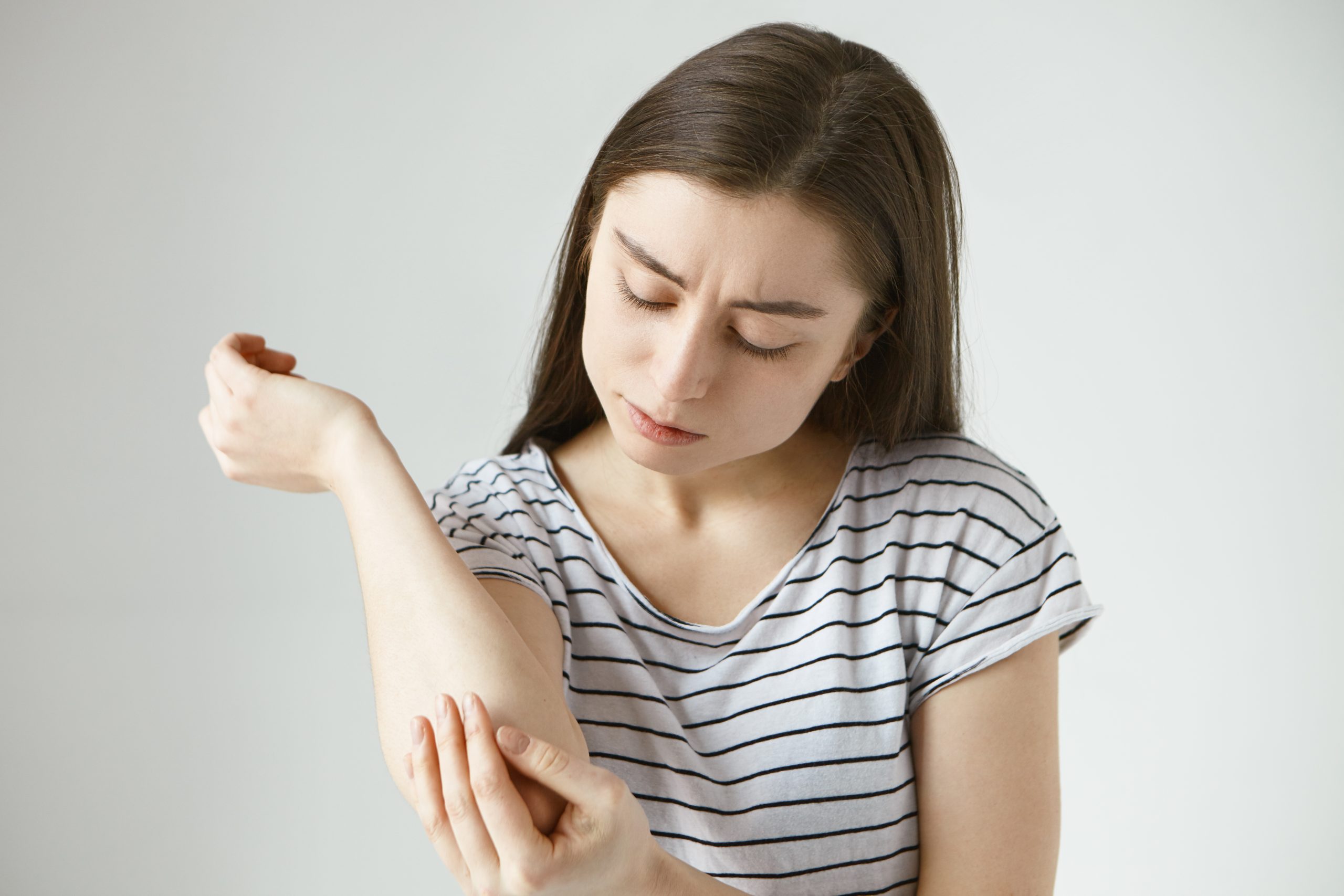
In conclusion, consumption of fish oil has mixed results in studies depending on what kind of problem we are looking to solve with fish oil. Since there are various factors influencing a particular health problem, There is no magic pill in this world, honey! You need to, however, eat healthily, consume a lot of vegetables and fruits, and exercise, but if you think that you do not get enough omega 3 from your diet because you dislike fish, are afraid to consume fish regularly due to contamination, etc., or simply would like to make sure that your body has enough omega 3, then there is no harm in taking fish oil supplementation. It's just that in order to make sure you get the right omega 3 for your body, buy it from a pharmacy, make sure the product has a Ministry of Health (MOH) notification number, and simply ask a healthcare professional which omega 3 supplementation suits you, simply for the dosage and perhaps current medication that you are on, and you are good to go!
References
-
Harvard T.H Chan. School of Public Health. Fish: Friend or Foe? https://www.hsph.harvard.edu/nutritionsource/fish/
-
Harvard T.H. Chan. School of Public Health. No mental health benefit from fish oil. https://www.hsph.harvard.edu/news/hsph-in-the-news/no-mental-health-benefit-from-fish-oil/\
-
Harvard T.H. Chan. School of Public Health. https://www.hsph.harvard.edu/news/hsph-in-the-news/fish-stroke-risk-mozaffarian/
-
Harvard T.H Chan. School of Public Health. Major Meta Analysis in Clinical Trial Omega 3 Supplemeny link with lower risk of CVD. https://www.hsph.harvard.edu/news/press-releases/in-major-meta-analysis-of-clinical-trials-omega-3-fish-oil-supplements-linked-with-lower-cardiovascular-disease-risk/
-
Harvard T.H. Chan. School of Public Health. Fish Oil Supplementation and Heart Health. https://www.hsph.harvard.edu/news/hsph-in-the-news/mozaffarian-fish-oil-supplements-heart-health/
-
Schlichte, M. J., Vandersall, A., & Katta, R. (2016). Diet and eczema: a review of dietary supplements for the treatment of atopic dermatitis. Dermatology practical & conceptual, 6(3), 23–29. https://doi.org/10.5826/dpc.0603a06
-
Huang, T. H., Wang, P. W., Yang, S. C., Chou, W. L., & Fang, J. Y. (2018). Cosmetic and Therapeutic Applications of Fish Oil’s Fatty Acids on the Skin. Marine drugs, 16(8), 256. https://doi.org/10.3390/md16080256
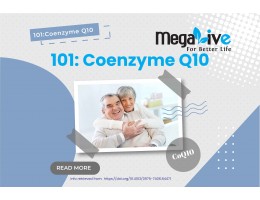
101: Coenzyme Q10
Why do we need CoQ10?
CoQ10's main function is to act as an energy transfer molecule, where it is a co-factor in the production of energy. Essentially, all cellular functions are dependent on an adequate supply of energy, which explains why coq10 is vital for all tissues and organs. CoQ10 is also one of the most significant lipid antioxidants that prevents the generation of harmful substances in the body, such as free radicals, which can lead to the modification of proteins, lipids, and DNA.
Antioxidant is defined as a substance that inhibits the oxidation process or is a scavenger of free radicals that are produced by normal body processes, hence making the body more stable.
Due to its function as antioxidants, not only can it help neutralize free radicals and prevent the damage caused by free radicals, but it can also improve energy and augment the immune system.
Who needs CoQ10?
There are certain individuals who need to consume more CoQ10 as the amount in their bodies is diminishing.
- Individual who is consuming or on statin medication (medicine used to lower high blood levels of cholesterol or triglycerides to prevent heart problems). This is because studies show that statins interfere with the production of mevalonic acid, which is used to form CoQ10. Thus, individuals who consume statins have low levels of CoQ10 in their bodies.
- Individuals with heart conditions, such as heart failure and angina, may benefit from taking a CoQ10 supplement. A review of 13 studies in people with heart failure found that 100 mg of CoQ10 per day for 12 weeks improved blood flow from the heart.
- As CoQ10 is involved in the production of energy, it can be used by athletes and those who would like to boost physical performance. A 6-week study in 100 German athletes found that those who supplemented with CoQ10 daily experienced significant improvements in physical performance, measured as power output, compared to a placebo group. CoQ10 supplements help reduce the inflammation associated with heavy exercise and may even speed recovery.

How much do we need CoQ10?
A typical CoQ10 dosage is about 30–90 mg per day, taken in divided doses, but the recommended amount can be as high as 200 mg per day. CoQ10 is a fat-soluble antioxidant, so it is better absorbed when taken with a meal that contains oil or fat. The clinical effect of CoQ10 may take up to eight weeks.
Food source with CoQ10?
Primary dietary sources of CoQ10 include oily fish (such as salmon and tuna), organ meats (such as liver), and whole grains. Most individuals obtain sufficient amounts of CoQ10 through a balanced diet, but supplementation may be useful for individuals with particular health conditions. CoQ10 is available as a supplement in several forms, including soft gel capsules, oral spray, hard shell capsules, and tablets.
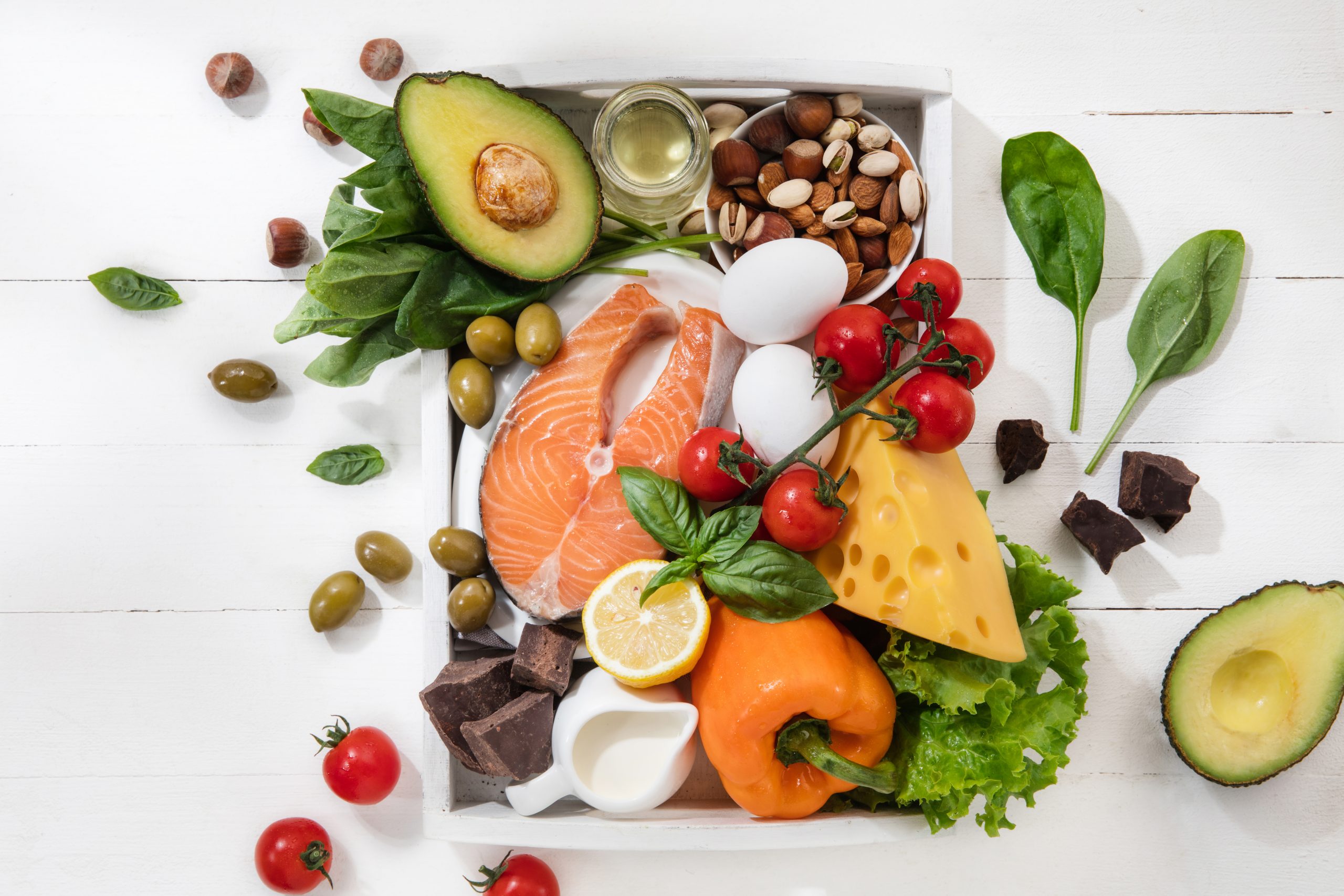
Safety precautions
Consumption of CoQ10 might not really be suitable for individuals who consume warfarin medication, pregnant women, or breastfeeding mothers.
References
- Saini R. (2011). Coenzyme Q10: The essential nutrient. Journal of pharmacy & bioallied sciences, 3(3), 466–467. https://doi.org/10.4103/0975-7406.84471
- National Institute Health (NIH). National Centre for Complementary and Integrative Health. Coenzyme Q10. https://www.nccih.nih.gov/health/coenzyme-q10
- CoQ10 dosage: How much you should consume per day? https://www.healthline.com/nutrition/coq10-dosage
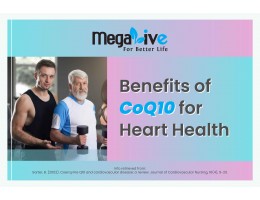
Benefits of CoQ10 for Heart Health
Therapeutic benefit in hypertension.
Hypertension, also known as high blood pressure, is a condition in which the blood pressure rises above 120/80. CoQ10 has been shown in animal model studies to significantly reduce blood pressure levels while having no effect on other hypertension-related parameters such as plasma renin, serum/urine sodium and potassium, or urinary aldosterone. It is also suggested that varying COQ10 dosage results in a reduced need for medication. In a human study, taking 60 mg of CoQ10 twice daily for 8 weeks reduced blood pressure, plasma inulin, glucose, and several lipid compounds. Other human studies have ranged from 100 to 225mg/day for 4.4 to 10 months.

Therapeutic benefit in coronary artery disease.
Coronary heart disease (CHD) occurs when the coronary arteries that supply oxygen-rich blood to your muscles become narrowed due to a gradual buildup of fatty material within their walls. The condition is also referred to as atherosclerosis. Pretreatment with CoQ10 has been shown in animal studies to reduce myocardial ischemia (occurs when blood flow to the heart muscle is obstructed by a partial or complete blockage of plaque buildup (atherosclerosis)) and cardiac dysfunction. In human studies, a dose of 300 mg/day for 7 days straight improves heart efficiency as measured by oxygen consumption per energy formed. Another study on humans using a 150mg dose of CoQ10 found that the supplement increased treadmill exercise tolerance. However, because these two studies involved a small number of subjects, they are not statistically significant.
Therapeutic benefit of congestive heart failure
A small study of 17 patients with congestive heart failure discovered that using 30 mg/day of coenzyme Q10 improved the patients' condition, with 53% of the patients becoming asymptomatic after four weeks of treatment (no symptoms). Another large-scale study involving 2664 patients who took 50-100mg/day of coenzyme Q10 for three months found that 54% of patients improved in their symptoms of insomnia, nocturia, and vertigo.

Is CoQ10 recommended for heart health prevention and treatment?
In conclusion, it appears that CoQ10 may be beneficial for heart health prevention and treatment, particularly for people with coronary heart disease, hypertension, and congestive heart failure. This is due to its ability to prevent LDL oxidation. It also appears that the majority of patients with heart disease are deficient in coenzyme Q10, which can lead to a variety of heart-related complications later on.
References
- Sarter, B. (2002). Coenzyme Q10 and cardiovascular disease: a review. Journal of Cardiovascular Nursing, 16(4), 9-20.
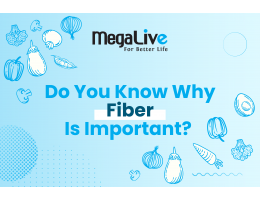
Do you know why fiber is important?
Fiber is a type of carbohydrate that our body is unable to digest. Though most carbohydrates are broken down into sugar molecules, fiber cannot be broken down into sugar molecules, and instead it passes through the body undigested. Fiber helps regulate sugars in the body and helps keep hunger and blood sugar in check.
Children and adults need at least 20 to 30 grammes of fiber per day for good health. It can be obtained by consuming a diet rich in whole grains, vegetables, legumes, nuts, and fruits.
There are two types of fiber: soluble fiber and insoluble fibre.
-
Soluble fiber is a type of fiber that dissolves in water and can help lower glucose levels and blood cholesterol levels. Foods with soluble fiber include oatmeal, nuts, beans, lentils, apples, and blueberries.
-
Insoluble fiber is a type of fiber that does not dissolve in water. It can help food move through the digestive system, promoting regularity and helping to prevent constipation. Foods with insoluble fibers are wheat, whole wheat bread, whole grain couscous, brown rice, legumes, carrots, cucumbers, and tomatoes.
There are various studies confirming that consumption of a diet high in fiber helps to make the overall body function healthier.
Heart Health
In a Harvard study with over 40, 000 male health professionals, researchers found that consumption of a high-fiber diet reduced the risk of getting coronary heart disease by 40%. Another study conducted by Harvard among female nurses also found similar findings: a high-fiber diet lowers the risk of metabolic syndrome (a combination factor of heart disease and diabetes). These factors are high blood pressure, high insulin levels, excess weight, a high triglyceride level, and a low HDL level (good cholesterol level).

Diabetes Mellitus Type 2.
A diet low in fiber and high in carbohydrates and fat can cause a sudden spike in blood sugar, which can increase the risk of developing type 2 diabetes. Both Harvard studies with female nurses and male health professionals found that this type of diet increased more than double the risk of type 2 diabetes.
Other studies, such as the Black Women’s Health Study and the European Prospective Investigation into Cancer and Nutrition, have shown similar results.
Constipation.
It is believed that the fibre in wheat bran and oat bran is more potent than the fibre found in fruits and vegetables. In addition, because fibre absorbs water, experts advise increasing beverage intake along with fibre intake rather than doing so abruptly.
Cancer.
Fiber is shown to decrease the risk of breast cancer through a large-scale study in 2016, where the findings indicate that higher fiber intake reduces breast cancer risk, suggesting that fiber intake during adolescence and early adulthood may be particularly important.
In other words, women who consume higher fiber foods during adolescence and young adulthood, including vegetables and fruits, may have a significantly lower breast cancer risk than those who eat less dietary fiber when young.
In conclusion, consumption of sufficient fiber can give various benefits to the human body. According to the Malaysia Food Pyramid 2020, it is recommended to consume 3 servings of vegetables and fruits daily. However, according to the National Health Morbidity Survey (NHMS), about 95% of Malaysians do not consume enough vegetables and fruits daily, which is why sometimes consumption of fiber supplements can help to bridge the gap of poor dietary intake.
Reference
1. Harvard T.H. Chan School of Public Health. Fiber. https://www.hsph.harvard.edu/nutritionsource/carbohydrates/fiber/
2. National Health and Morbidity Survey (NHMS) (2019). Chapter 09, Of fruits, veggies, and plain water. http://iptk.moh.gov.my/images/technical_report/2020/4_Infographic_Booklet_NHMS_2019_-_English.pdf
3. Malaysia Food Pyramid 2020. Ministry of Health Malaysia. Nutrition Division. http://nutrition.moh.gov.my/piramid-makanan-malaysia-2020-mendidik-rakyat-mengambil-makanan-dengan-betul/
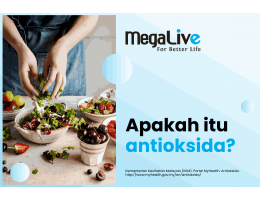
Apakah itu antioksida?
Dari masa ke semasa, badan melalui proses pertumbuhan seperti panjangnya kuku dan pertumbuhan rambut yang melibatkan aktiviti pengoksidaan. Proses pengoksidaan ini melibatkan pemberian dan pengambilan elektron, di mana akan menghasilkan elektron bebas yang tidak bergabung dengan mana – mana elektron yang lain. Elektron bebas ini juga dirujuk sebagai radikal bebas. Radikal bebas atau elektron bebas ini adalah elektron yang tidak stabil dan dapat memberikan pelbagai risiko penyakit termasuklah kanser. Fungsi antioksida adalah untuk bergabung dengan elektron bebas atau radikal bebas ini dan meneutralkan atau menstabilkan badan dari risiko pelbagai jenis penyakit.
Kebiasaannya badan dapat menghasilkan antioksida dengan sendiri, akan tetapi setelah lanjut usia, kebolehan badan untuk menghasilkan antioksida semakin berkurangan, ketidakseimbangan antioksida dan radikal bebas boleh meningkatkan risiko penyakit. Justeru, para profesional perubatan sering menasihatkan kita untuk makan makanan dari sumber semulajadi seperti sayur – sayuran, dan buah – buahan dengan banyak. Ini kerana, sayur – sayuran dan buah – buahan mempunyai tinggi sumber antioksida seperti beta karotena, lutein, likopena (lycopene), vitamin c, vitamin E dan pelbagai lagi.
Ikutlah saranan pengambilan makanan sihat oleh Kementerian Kesihatan Malaysia (KKM). Makan 3 sajian sayur dan dua sajian buah setiap hari untuk mendapatkan jumlah antioksida yang diperlukan badan. 1 sajian sayur adalah bersamaan dengan saiz satu saiz tapak tangan manakala, saiz sajian buah adalah mengikut kepada jenis buah tersebut seperti di bawah. Jika anda merasakan pengambilan sayur – sayuran dan buah – buahan anda tidak mencukupi di mana ia dapat memberi kesan kepada jumlah antioksida dalam badan, anda juga boleh menggunakan alternatif suplemen untuk mendapatkan jumlah antioksida yang cukup.


Rujukan
- Kementerian Kesihatan Malaysia (KKM). Portal MyHealth. Antioksida. http://www.myhealth.gov.my/en/antioksida/
- Hello Doktor. Manfaat antioksida. https://hellodoktor.com/pemakanan/fakta-nutrisi/manfaat-antioksidan/
- Kementerian Kesihatan Malaysia (KKM). Bahagian Pemakanan. https://nutrition.moh.gov.my/
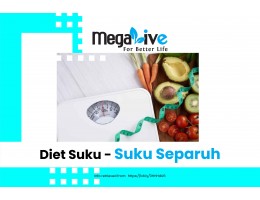
Diet Suku - Suku Separuh ?
Diet suku – suku separuh adalah saranan diet oleh Kementerian Kesihatan Malaysia (KKM) untuk cara pemakanan sihat. Pelbagai langkah dan inisiatif telah dilakukan bagi mempromosikan amalan pemakanan sihat kepada rakyat Malaysia.
MegaLive menyambut baik saranan ini dengan turut sama mempromosikan amalan pemakanan sihat kepada semua.
Suku – suku separuh adalah diet yang merangkumi suku jumlah karbohidrat seperti nasi, mee, bihun, capati, roti dll, suku jumlah protein seperti ayam, ikan, sotong dll dan separuh jumlah sayur – sayuran dan buah – buahan. Pinggan yang dirujuk dalam saranan diet ini adalah pinggan berukuran 10 inci/ 25sm.
Contoh hidangan suku – suku separuh:
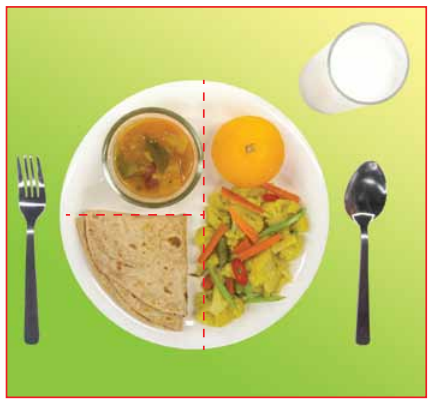
Capati dengan kuah dhal.
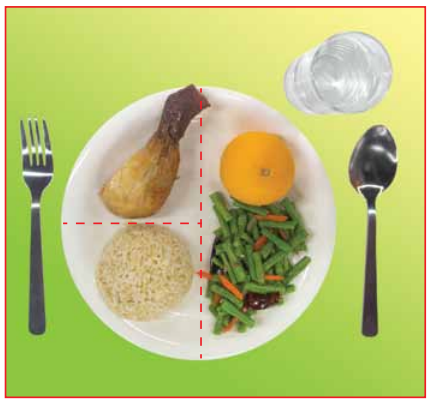
Nasi beras perang dengan ayam tanpa kulit dan sayur.
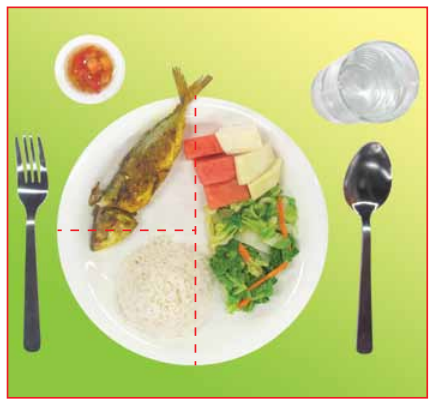
Nasi putih dengan ikan bakar dan sayur.
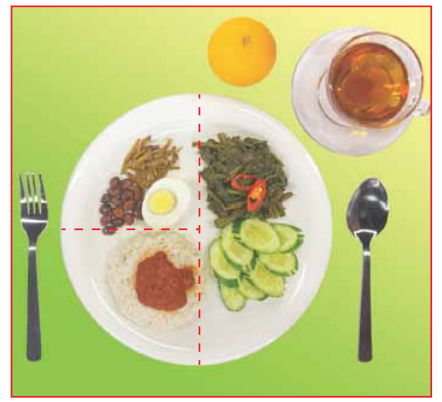
Nasi lemak
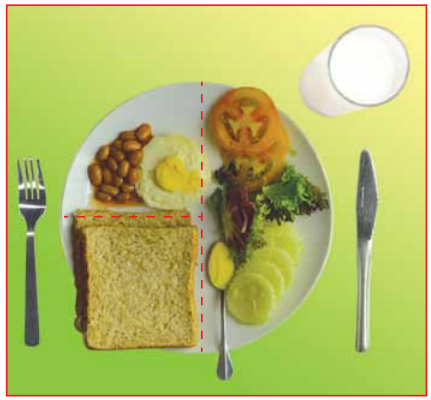
Roti dengan telur dan salad.
Terdapat 5 mesej utama dalam amalan diet suku – suku separuh.
Mesej Utama 1: Makan 3 Hidangan Utama yang sihat dalam sehari.
Ambil sarapan, makan tengah hari, dan makan malam secara sihat dengan mengikuti konsep suku – suku separuh.
Makan pada waktu yang tetap juga membantu pengawalan porsi/ saiz hidangan makanan. Berikut adalah contoh waktu makan harian.

Mesej Utama 2: Makan 1-2 Snek yang Sihat di antara Waktu Makan Jika Perlu
Bagi menggalakan amalan pemakanan secara sihat secara holistik atau sebagai gaya hidup, anda juga digalakkan untuk mengambil snek sihat 1-2 kali/ hari dari sumber buah – buahan, kekacang, dan sayur – sayuran.
Contoh snek sihat yang boleh di ambil 1-2 sajian ialah:
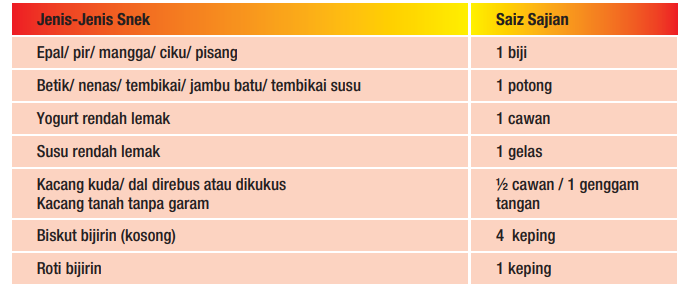
Mesej Utama 3: Makan Sekurang-kurangnya Separuh Daripada Bijirin Anda Sebagai Bijirin Penuh
Malaysia adalah negara di mana, makanan rujinya adalah nasi, oleh itu tidak hairanlah jika kebanyakkan rakyat Malaysia masih berasa tidak kenyang selagi tidak makan nasi. Oleh yang demikian, Kementerian Kesihatan Malaysia (KKM) menggariskan pengambilan karbohidrat hendaklah diambil kebanyakkannya dari sumber bijirin penuh, seperti dari sumber nasi beras perang, roti bijirin mil penuh, jagung, barli dll.
Contoh makanan berkarbohidrat yang tinggi serat:
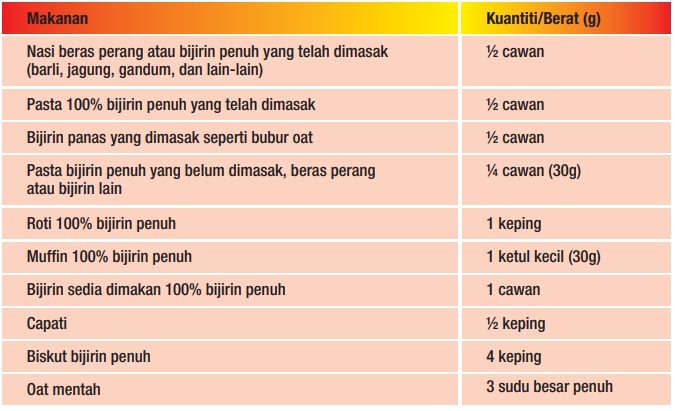
Mesej Utama 3: Makan Sekurang-kurangnya Separuh Daripada Bijirin Anda Sebagai Bijirin Penuh
Malaysia adalah negara di mana, makanan rujinya adalah nasi, oleh itu tidak hairanlah jika kebanyakkan rakyat Malaysia masih berasa tidak kenyang selagi tidak makan nasi. Oleh yang demikian, Kementerian Kesihatan Malaysia (KKM) menggariskan pengambilan karbohidrat hendaklah diambil kebanyakkannya dari sumber bijirin penuh, seperti dari sumber nasi beras perang, roti bijirin mil penuh, jagung, barli dll.
Contoh makanan berkarbohidrat yang tinggi serat:

Mesej Utama 4: Makan Hidangan Tidak Bergoreng dan Tanpa Santan Setiap Hari
Seterusnya, lauk -pauk di Malaysia begitu sinonim sekali dengan jenis lauk -pauk yang digoreng menggunakan minyak yang sangat banyak iaitu menggunakan kaedah ‘deep -frying’. Makanan bergoreng dengan minyak banyak yang digunakan secara berulang – ulang dan makanan yang mengandungi jumlah santan yang tinggi boleh meningkatkan masalah kesihatan seperti masalah jantung, darah tinggi, kolesterol dan kanser.
Justeru, pengambilan makanan dengan cara masakan dengan kandungan santan yang tinggi seperti masak lemak, kari, gulai, dan masakkan bergoreng hendaklah dihadkan.
Cara mengantikan pengambilan minyak dan santan dalam masakan dan makanan:

Rujukan:
- Kementerian Kesihatan Malaysia (KKM). Bahagian Pemakanan. Panduan Pinggan Sihat Malaysia. https://bit.ly/3HHHdU6
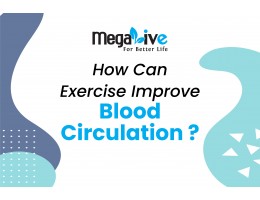
How can exercise improve blood circulation?
Many experts recommend doing exercise or at least moving around to improve blood circulation. This is because exercise leads muscles to require more oxygen, which improves blood circulation.
Current medical science proves the old adage that "a man is as old as his arteries (blood vessels)," because we now know that blood vessels transport vital oxygen-rich blood to all body tissue. Maintaining artery health (blood vessel health) is thus analogous to maintaining overall health.
Endothelial cells line the inside of blood vessels and perform a variety of functions, the most important of which is the production of nitric oxide. Nitric oxide is essential for keeping the lining of blood vessels smooth and slippery, preventing white blood cells and platelets from adhering and causing inflammation or blood clots. Aside from that, it relaxed the muscle cells in blood vessels to prevent spasms and keep arteries open.
A study of four groups of healthy people: young exercisers, young non-exercisers, elderly exercisers, and elderly non-exercisers discovered that while age had a significant impact on endothelial function and nitric oxide production, it had a smaller and more gradual impact on people who exercised regularly. This demonstrates that exercise does, in fact, keep blood vessels young!

Regular exercise benefits blood vessels by increasing nitric oxide production in endothelial cells, thereby maintaining oxygen supply throughout the body and heart health!
When you have a poor blood supply, your extremities, such as your hands and legs, are often affected.
Here are some exercises to improve blood circulation in your extremities;
- Ankle rotation
- Walking
- Heel and toe raises
- Knee flexions
- Squat
- Using exercise ball
- Yoga movement that requires movement of hands and legs
In conclusion, because exercise is essential for maintaining healthy blood vessels, body movement will help in some ways to maintain healthy blood vessels. So get moving and don't be a couch potato!
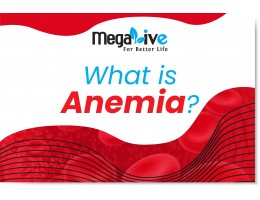
What Is Anemia?
Anemia is a common blood disorder. It is a condition when the body does not have enough red blood cells and is unable to deliver enough oxygen throughout the body.
Anemia is diagnosed by a low haemoglobin or hematocrit level in a blood test. The main protein in red blood cells is haemoglobin. It transports and distributes oxygen throughout your body. Your haemoglobin level will be low if you have anaemia. If it falls below a certain level, your tissues or organs may not receive enough oxygen.
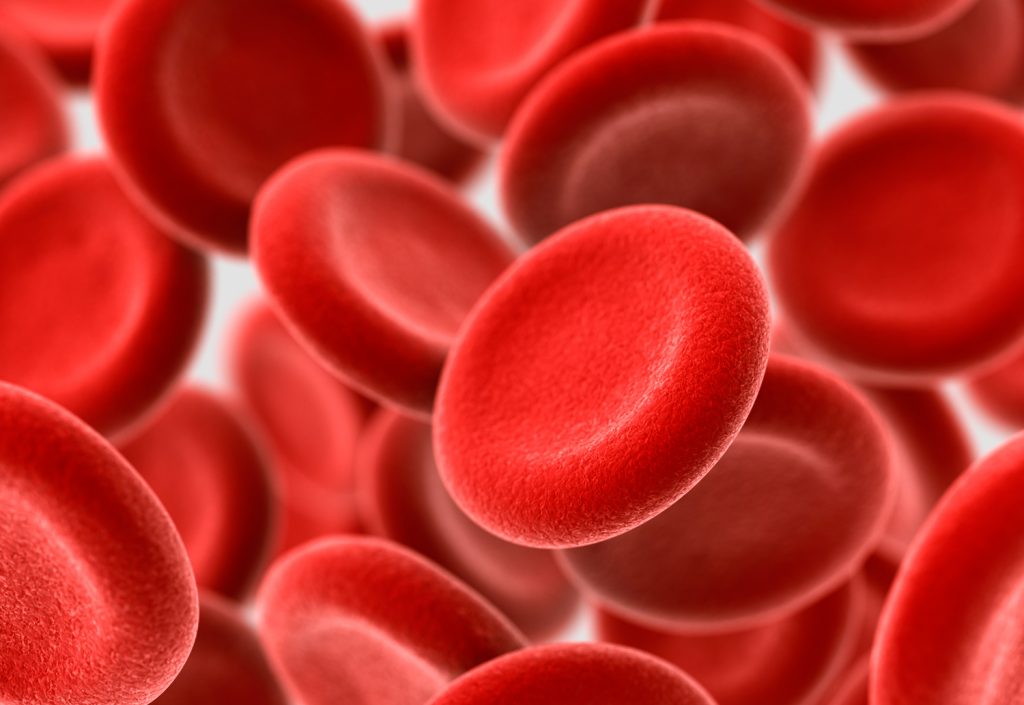
Symptoms of anemia
Lethargic or tiredness are the most common symptoms of anemia. Other symptoms include pale skin, an irregular or fast heartbeat, shortness of breath, chest pain, headache, and light-headedness.
Types of anemia
Among the types of anemia are sickle cell anemia, iron deficiency anemia, thalassemia, aplastic anemia, and many more.
Each of these types of anemia has its own cause.
In conclusion,
anemia must be treated depending on the cause, ranging from taking supplements to having medical procedures.
Most importantly, anemia can be prevented by consuming a healthy and varied diet.
Iron-rich foods include boiled cockles, chickpeas, fried soy bean curd, liver, dried anchovies, bitter gourd, spinach, and kangkung.

How to improve your blood circulation?
Individuals with poor blood circulation typically experience numbness and coldness in their extremities, particularly their hands and feet. It is often the result of an underlying condition to a more serious condition, such as uncontrolled diabetes or low blood pressure, but it can also be the result of poor posture, among other things.
Here are some tips on how to improve your blood circulation:
1. Go on regular walks
Walking can improve blood circulation. Contraction of the calf muscle causes venous blood to be pushed back up to the heart. The arteries dilate when patients walk and improve blood flow throughout the body. Aim for a minimum of 30 minutes of walking three times per week.
2. Reduce your weight
Being obese or overweight poses a greater health risk to your circulatory system because it increases your risk of hypertension, high cholesterol, and diabetes, all of which lead to blood circulatory problems.
Consumption of food in moderation, balance and exercise regularly can help to prevent being obese and overweight.
3. Take more breaks at work
Taking more work breaks allows you to develop the habit of alternately sitting, standing, and walking. This reduces the demand on the circulatory system because sitting causes blood flow to slow and pool in your legs, resulting in muscle pain and fatigue. Thus, taking more breaks while working in an office is beneficial for improving blood flow and keeping your stress level in check.
Try to stretch every 15 to 20 minutes and get up and move every hour—even if it's just a power walk around your house.
4. Stay hydrated
When your body is dehydrated, it affects the amount of blood that circulates through it. It also causes your blood to retain more sodium, causing it to thicken and making it much more difficult for your circulatory system to function properly.
Checking your pee is the simplest way to ensure that you are getting enough fluid. A yellow light or clear urine indicates that you are drinking enough water; anything darker indicates that you need to up your water intake game!
5. Manage your blood pressure
High blood pressure causes your blood circulation to go haywire, putting more strain on your heart and blood vessels. If you do not manage your blood pressure properly, the heart and circulatory system will have to work harder to supply blood flow throughout the body.
High blood sugar levels can harm the lining of small blood vessels, causing blood circulation issues. This condition will also encourage the formation of plaque in your blood vessels, further complicating matters.
Exercise, limiting sodium intake, reducing stress, getting enough sleep, and making changes to your lifestyle can all help to lower your blood pressure and improve your circulation. Ideally, your blood pressure should be less than 120/80 mmHg.
6. Elevate your legs
Elevating your legs relieves pressure on your veins because the blood does not have to work against gravity to return to the heart.
When you are watching TV or taking a nap, the most convenient time to elevate your legs is when you are lying down and prop your legs above your heart level for 15 minutes or more at a time. This will greatly improve overall blood circulation.

Benefits of Ginkgo
Ginkgo or maidenhair is an ancient Chinese herb ingredient. It is collected from the dried green leaves of the plant and is available as liquid extracts, capsules, and tablets. It is used for various reasons as a traditional herb supplement. Currently, many studies are still exploring whether ginkgo can improve health condition as per belief.
Ginkgo and blood circulation.
Ginkgo contains high levels of flavonoids and terpenoids, these are antioxidants that provide protection against oxidative cell damage from harmful free radicals. These antioxidants also help to improve blood circulation by dilating blood vessels and reducing the ‘stickiness’ of platelets.
Ginkgo’s apparent ability to increase blood flow to various parts of the body may be the origin of its many supposed benefits.
Ginkgo and brain function.
Studies found conflicting findings on whether gingko can help with preventing and slows down Alzheimer and dementia, but studies also found out that it can help with improving cognition, memory, and attention.
Generally, ginkgo appears to be safe for consumption in moderate amount, research does not support the use of the supplement to prevent or slow dementia. Many more research is needed to find out what role gingko might play in supporting brain function and treating other conditions.

The Power of Key Carotenoids for Screen-Strained Eyes
Our eyes face unique challenges in today’s screen-centric lifestyle. Between digital devices, indoor lighting, and environmental pollutants, our eyes are working overtime. Fortunately, natural ingredients can help protect our eyes from these modern-day stressors, keeping our vision sharp and comfortable.
-
Bilberry Extract: Known for enhancing blood circulation to the eyes, bilberry extract is especially helpful for those who experience eye strain from screens. Its antioxidant properties protect against oxidative damage, a common result of prolonged screen exposure, supporting clear vision and comfort in low-light settings.
-
Lutein and Zeaxanthin: These powerful carotenoids are nature’s blue light filter. Abundant in marigold flowers, they absorb and neutralize high-energy blue light, reducing digital eye strain and improving visual sharpness for screen users. Lutein and zeaxanthin are especially crucial for anyone spending long hours on digital devices.
-
Beta-Carotene: As a precursor to vitamin A, beta-carotene is essential for healthy vision, particularly in low-light conditions. For those who experience screen-induced eye fatigue, beta-carotene’s role in supporting eye adaptability to varying light levels is invaluable.
-
Grape Seed Extract: Packed with antioxidants known as proanthocyanidins, grape seed extract promotes healthy blood vessels, ensuring the eyes receive a steady flow of oxygen and nutrients. This circulation boost is particularly beneficial for those experiencing screen-induced eye strain and fatigue.
By integrating these eye-friendly nutrients into your routine, you can help combat screen strain and keep your eyes feeling refreshed throughout the day.
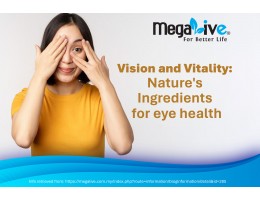
Vision and Vitality: Nature’s Ingredients for Eye Health
Our eyes are constantly exposed to screens, sunlight, and environmental stressors. Fortunately, specific natural ingredients are celebrated for their role in supporting and maintaining eye health. Here’s a look at how these powerful components work together to protect our vision and overall wellness.
1. Bilberry and Grape Seed Extracts: Known for their rich antioxidants, bilberry and grape seed extracts offer natural protection against oxidative damage. This helps reduce strain on the eyes, while also supporting healthy blood vessels, which are crucial for maintaining clear vision.
2. Maqui Berry Extract: Maqui berries are a nutrient-dense powerhouse with high anthocyanin content, which promotes eye comfort and reduces symptoms of dry eyes. Their anti-inflammatory properties also contribute to long-term eye health, especially for those frequently exposed to screens.
3. Lutein & Zeaxanthin: Lutein and zeaxanthin are types of carotenoids, found abundantly in marigold flower extract. They act as natural filter against blue light. Studies noted that, optimized Lutein & Zeaxanthin (Lutemax ® 2020), a patented blend delivering 5:1 ratio of lutein to zeaxanthin, offers optimal protection against blue light from screens and environmental stress as it guards retina and supporting visual sharpness. These also play a key role in reducing the risk of age-related vision concern in the long term.

4. Algae Oil Powder: A natural source of omega-3 fatty acids, algae oil powder provides essential nutrients that help maintain the moisture and health of the eye’s surface. Omega-3s are also known to support cognitive function and overall cellular health, making it a valuable addition to daily wellness.
Together, these ingredients offer a comprehensive approach to eye care—promoting comfort, protecting vision, and supporting vitality. Embrace nature’s finest for eye health and let your vision shine bright!
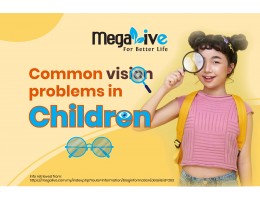
Common Vision Problems in Children
Children’s vision helps them to experience and explore the world around them. It is a crucial part of their development. If children have an uncorrected vision problem, it can affect their ability to learn and reach their highest potential.
Vision does not fully develop when a baby is born. Only when children are 18 months to 4 years old do vision problems in kids tend to emerge, and they are hard to detect because children are not aware that their vision is compromised because they have been seeing it that way and that is all they have ever known.
Here are some common vision problems in children:
- Amblyopia (lazy eye)
This condition occurs when vision in one eye is reduced due to a communication error between the brain and the affected eyes.
The visual impairment from amblyopia can persist during adulthood if treatment has not been previously offered. This is because the brain has learned to ‘ignore’ or ‘suppress’ the images coming from the poorer eye. These deficits derive from the visual areas of the brain.
Treatment involves normalising the poorer eye (often with glasses and/or eye patching) and re-training the eyes and the brain to work in a normal way (often with orthoptic eye exercises, called vision therapy). The treatments are most successful for young children, but adults can also benefit from the vision therapy.
- Myopia (Shortsightedness)
Occurs when the eyes are unable to focus clearly on objects that are far away. The image falls ‘in front’ of the retina when one looks at a distant object. This does not usually affect close-up vision except in high myopia.
- Hyperopia (Longsightedness)
Occurs when the eyes are unable to focus clearly on objects that are close-up. It can also affect far-distance vision in some cases. The image falls ‘at the back’ of the retina when one looks at a near object, and it often makes it difficult for the eyes to focus.
- Astigmatism
This condition occurs when the cornea has an irregular shape. It often occurs together with myopia or hyperopia, and it can result in blurred vision. Even without myopia or hyperopia, the astigmatic eye will not be able to focus sharply, and one might complain about glare or visual discomfort, particularly in poor lighting. It is often associated with headaches, dizziness, and eyestrain.
- Strabismus (Crossed eyes)
Occurs when the two eyes turn in different directions. It can occur in a child or an adult. When one eye is aligned well, the other may turn in or out, up or down. This may be noticeable all the time, or it may be intermittent. It may be present soon after birth or appear at a later age. It may be due to a weak eye muscle or a nerve palsy. Some people get their eyes surgically realigned, while others may get ‘orthoptic’ eye exercises. The latter is also called vision therapy, and it often involves the use of prisms and a range of equipment to retrain the visual system.
Most of the time, vision problems are not obvious, making them hard to catch. The best way to catch the issues early is through vision screenings. Warning signs may include:
- Eye rubbing
- Tearing
- Swelling
- Redness
- Pus
- Crust
- Sensitivity to light
- Bulging or jiggly eyes
- Droopy eyelids
- White, yellow, or grey-white material in the pupil
If you notice any of these, or your child’s eyes are changing in any way, or you simply worry about their vision, do not wait longer; get that first vision test. It is always safe and better to catch when things are still in the early phase rather than the later phase.
References
- Centers for Disease Control and Prevention. Keep an Eye on Your Child’s Vision. https://www.cdc.gov/visionhealth/resources/features/vision-health-children.html
- IGARD. Common Eye and Vision Problems in Children. https://www.igard.com.sg/services/children/common-eye-and-vision-problems-in-children/
- WebMD. Signs of Vision Problems in Young Kids. https://www.webmd.com/eye-health/features/child-eye-and-vision-problems

Tips to Manage and Reduce Screen Time for Children
Living in today's digital world, the ubiquity of screens and gadgets is unavoidable. Individuals of all ages rely on screens for communication and daily tasks. However, excessive screen time, particularly for children, can have detrimental effects. Studies suggest that prolonged screen exposure can lead to behavioral issues, such as a lack of focus, and contribute to health problems, including obesity.

The American Academy of Pediatrics recommends specific screen time limits:
- No screen time for children under 2
- One hour per day for children aged 2 to 12
- Two hours per day for teenagers and adults
For teenagers, research indicates a correlation between excessive screen time and negative outcomes such as anxiety, depression, and reduced attention span.
To mitigate the risks associated with too much screen time, consider implementing the following tips for both children and families in general:
- Open Communication with Your Family: Explain to your children the downsides of excessive screen time from an early age. Demonstrate alternative activities, such as playing board games, solving puzzles, coloring, painting, or developing new skills like riding a bike. For toddlers, model "pretend play" with toys, engaging in activities like running a restaurant or playing teacher and student. Older kids can explore outdoor activities or construct items, such as building with Lego.
- Lead by Example: Parents should serve as positive role models by limiting their own screen time. Children often emulate their parents' behavior more than their words.
- Establish Screen Time Limits: Enforce a household rule limiting screen time to a maximum of two hours per day. Consistency is key in maintaining these limits.
- Transform Mealtime into Family Time: Turn off the TV during family meals to foster connection. Prohibit the use of phones during this time. Research indicates that families who share meals tend to consume more nutritious food, making prioritizing family mealtime crucial.
- Avoid Using Screen Time as a Reward or Punishment: To foster a healthy relationship with screens, refrain from using screen time as a reward for good behavior. This practice can lead children to perceive screens as a "reward" for compliance, potentially reinforcing undesirable habits.
By implementing these strategies, parents can actively contribute to reducing screen time and promoting a healthier, more balanced lifestyle for their children and the entire family.
References
- National Health Institute (NIH). National Heart, Lung, and Blood Institute. Tips to reduce screen time. https://www.nhlbi.nih.gov/health/educational/wecan/reduce-screen-time/tips-to-reduce-screen-time.htm
- Mayo Clinic Health System. 6 Tips to reduce children’s screen time. https://www.mayoclinichealthsystem.org/hometown-health/speaking-of-health/6-tips-to-reduce-childrens-screen-time
-01-260x200.jpg)
What is age-related macular degeneration (AMD)?
Age-related macular degeneration (AMD) is a common condition that affects people over the age of 50. It is the leading cause of vision loss in older people. Individuals with AMD are not completely blind, but they are losing their central vision, making it difficult for them to see faces, read, drive, or do close-up work around the house such as cooking or fixing things. Individuals suffering from AMD are unable to see fine details, whether they are looking at something close or far away.
AMD progresses slowly in some people and quickly in others. AMD is a type of eye disease that causes blurring of the central vision of the eyes due to damage to the macula. The macula is a part of the retina that controls sharp, straight, and ahead vision.
Types of AMD
There are two types of AMD:
Dry AMD
The most common type of AMD, accounting for approximately 80% of all AMD. Dry AMD occurs when parts of the macula thin with age and tiny clumps of protein known as drusen form.
Wet AMD
A less common type of late AMD known as advance neovascular AMD causes faster vision loss. Wet AMD can develop at any stage of dry AMD, but it is always the late stage of AMD. It occurs when abnormal blood vessels develop in the back of the eye, causing damage to the macula. The good news is that there are treatment options for wet AMD.
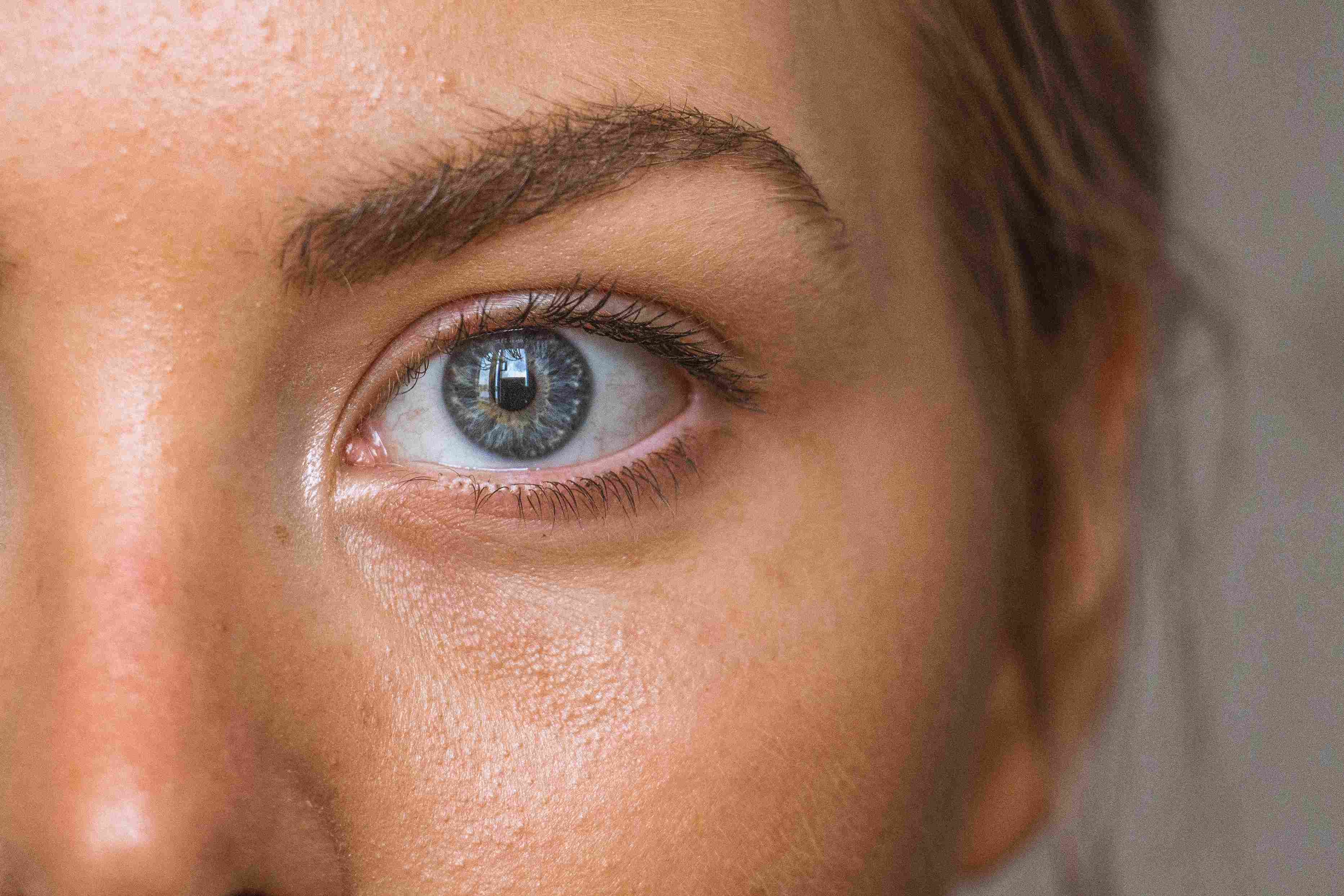
Stages of AMD
Early dry AMD causes no symptoms.
Some people with intermediate dry AMD still have no symptoms. Others may experience mild symptoms such as mild blurriness in their central vision or difficulty seeing in low light.
Many people who have late AMD (both wet and dry type) have noticed that straight lines become wavy or crooked. People may also notice a blurry area near the center of their vision. This blurry vision may worsen over time, and people may notice blank spots.
Treatment for AMD
There is currently no treatment that can help AMD in its early stages. Individuals with a lot of drusen or severe vision loss, on the other hand, may benefit from a specific combination of nutritional supplements based on the National Eye Institute's (NEI) AREDS and AREDS 2 eye surveys (Age-Related Eye Disease Studies). Vitamins like C and E, as well as lutein and zeaxanthin, zinc, and copper.
Aside from that, the eye doctor will usually schedule follow-up appointments to monitor/track how the eyes are doing with regular eye exams. Consuming healthy foods, getting regular exercise, and quit smoking can all help prevent and improve eye problems.
In the advanced stages of AMD, an eye doctor will consult with individuals about the necessary treatment to slow the progression of the eye problem.
References
1. National Eye Institute (NEI). Age related macular degeneration (AMD). https://www.nei.nih.gov/learn-about-eye-health/eye-conditions-and-diseases/age-related-macular-degeneration (Retrieved on January 5, 2023).
2. American Academy of Ophtalmology (AAO). What is macular degeneration? https://www.aao.org/eye-health/diseases/amd-macular-degeneration (Retrieved on January 5, 2023).
3. National Health Services (NHS, UK). What is AMD? https://www.nhs.uk/conditions/age-related-macular-degeneration-amd/ (Retrieved on January 5, 2023).
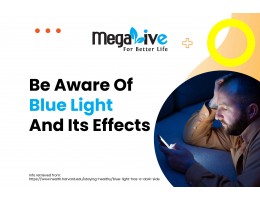
Be aware of blue light and its effects.
Sunlight constitutes of red, orange, yellow, blue, indigo, and violet. When these colours combine, they form the white light that we see. Each of these colours has a different wavelength and energy level, with blue having a shorter wavelength and more energy and red having a longer wavelength and less energy. Light that appears white may contain more blue wavelengths. Sunlight is the most abundant source of blue light. Fluorescent lighting, LED lighting, flat-screen LED televisions, computer monitors, smart phones, and tablet screens are among the others.

Almost all visible blue light is absorbed by the cornea and lens before reaching the retina. This light could impair vision and prematurely age the eyes. According to preliminary research, excessive blue light exposure may cause (1) digital eyestrain (2) retinal damage.
At night, blue light, which appears to be beneficial during the day, appears to be the most disruptive. Blue light is beneficial during the day because it can improve attention, reaction times, and mood; however, with the proliferation of electronics with screens and energy efficient lighting, humans are constantly exposed to blue wavelength, particularly after sundown.

According to research, exposure to blue wavelengths after sundown affects the body's circadian rhythm, increase risk of diabetes, heart disease, and obesity.
A Harvard study found a possible link between light after sundown, the body's circadian rhythm, diabetes, and obesity. The researchers put ten people on a schedule that gradually shifted their circadian rhythm timing. Their blood sugar levels increase, putting them at risk of diabetes, and their leptin levels increase as well (a hormone that promotes feeling full after a meal, went down).
Another blue light study compared the effects of 6.5 hours of blue light exposure to exposure to green light of comparable brightness. Blue light suppressed melatonin about twice as much as green light during the same exposure period, which shifted circadian rhythms by twice as much (3 hours vs. 1.5 hours).
In conclusion, blue light after sundown can affect health in a variety of ways. While we need this to progress in this modern society, we can also make minor adjustments to make things work without jeopardizing health.
- For night lights, use dim red lights because red light is less likely to disrupt the circadian rhythm and suppress melatonin.
- Avoid looking at bright screens beginning two or three hours before sleep.
- Consider wearing blue-blocking glasses at night if you work a night shift or use a lot of electronic devices.
- Allow yourself to be exposed to a lot of bright light during the day, which will improve your ability to sleep at night as well as your mood and alertness during the day.
References
- Blue light has a dark side. Harvard Health. https://www.health.harvard.edu/staying-healthy/blue-light-has-a-dark-side (Retrieved on January 3, 2023).
- Seeing blue: How can blue light affect your health. WebMD. https://www.webmd.com/eye-health/blue-light-health (Retrieved on January 3, 2023).
- What is blue light. Prevent blindness. https://preventblindness.org/blue-light-and-your-eyes/ (Retrieved on January 3, 2023).
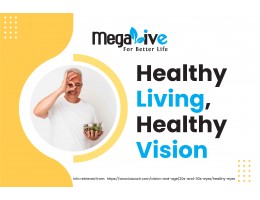
Healthy Living, Healthy Vision.
Eat Healthy Food
It is commonly assumed that the health of your eyes is unrelated to what you consume, but the truth is that it is. Consuming nutrient-dense foods will allow you to maintain good health, thereby avoiding complications that may arise in your eyes as a result of your health complications.
As part of a healthy diet, choose foods high in antioxidants, such as vitamins A and C, which have been shown to benefit eye health. Foods high in vitamins A and C include green leafy vegetables and foods with bright colours like orange and red. It also contains carotenoid, which is beneficial to the eyes. Carotenoid is an antioxidant found in plants that are brightly coloured, such as red, orange, yellow, and green. Aside from that, it can act as a cancer-fighting agent. Carotenoid works in the macular (the most sensitive part of the retina responsible for vision production and colour perception).
Lutein and zeaxhantin are types of carotenoids.
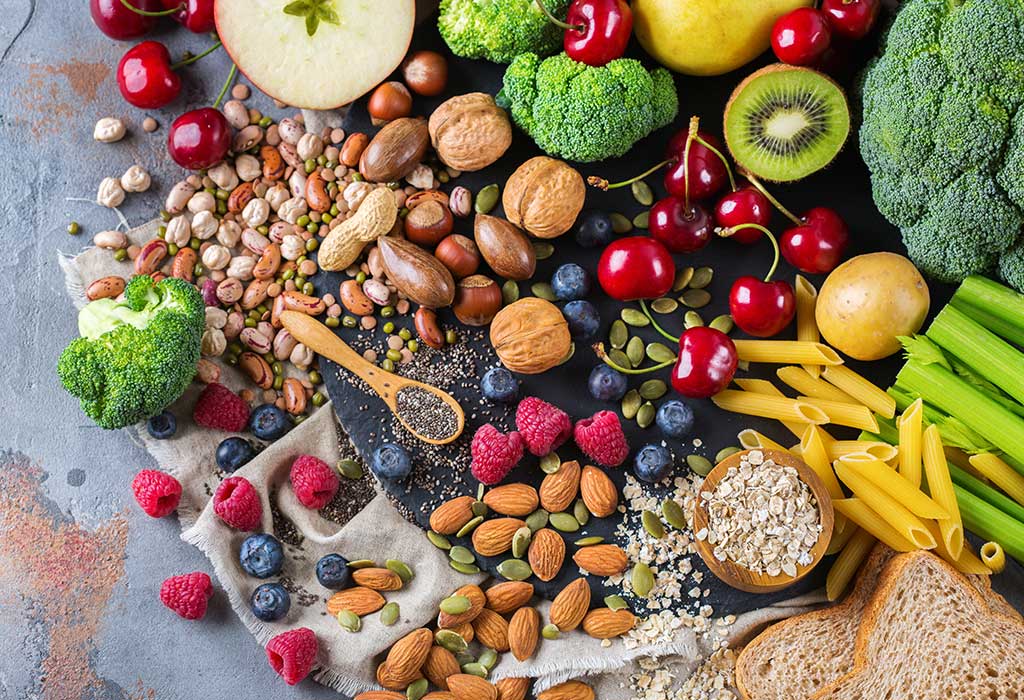
Inadequate antioxidant intake, alcohol consumption, or saturated fat consumption may result in free-radical reactions that harm the macula. High-fat diets can also cause deposits in the arteries that restrict blood flow. Because of the small size of the blood vessels that feed the eyes, they are especially sensitive to this.
Exercise regularly
By exercise regularly, body will have lower risk of getting various kind of metabolic disease such as diabetes, kidney problem and heart problem, thus lower the risk of getting complication that can impair eyes function. Example of metabolic disease that can impair eyes directly is, diabetes, which in the later stage can cause diabetic retinopathy. The condition where blood vessels of the light-sensitive tissue at the back of the eye (retina) is damaged. At first, it may cause no symptoms or mild blurry vision, eventually it can cause blindness.

Wear sunglasses
The American Academy of Opthalmology (AAO) encourages people to protect their eyes from the sun's harmful UV rays. Sunglasses are more than just a fashion statement; they are also a wise and healthy choice. Long-term sun exposure without adequate protection can increase the risk of eye disease such as cataract, macular degeneration, eye growth, and a rare form of eye cancer.
While short-term exposure can also damage the eyes. Sun reflecting off water can cause a painful sunburn on the front part of the eye, called photokeratitis. It causes redness, blurry vision, sensitivity to bright light, and in rare cases, even temporary vision loss.
The good news is that prevention is simple: Wear sunglasses that block 99 to 100 percent of both UVA and UVB radiation.
Quit smoking
Smoking is not only bad for your lungs. It can hurt your eyes, as well. Smoking increases your risk of eye diseases like macular degeneration and cataracts.
Eye care in conclusion
People usually take their eyesight and health for granted; it was only when we began to lose the ability that we began to take it seriously. Start taking care of your eyes now by doing the above. If you are constantly looking at a screen, you can also give your eyes a break every 20 minutes by looking 20 feet away for 20 seconds. If you have a family history of eye problems, schedule a comprehensive dilate eye exam on a regular basis. If you wear contact lenses, make sure to disinfect them and replace them on a regular basis. Also, remember to wash your hands before touching your eyes or face
References
- National Institute of Health (NIH). National Eye Institute (NEI) (July 2020). Keep your eyes healthy. https://www.nei.nih.gov/learn-about-eye-health/healthy-vision/keep-your-eyes-healthy (Accessed on July 28, 2020).
- Bausch + Lomb. Healthy Eyes. https://www.bausch.com/vision-and-age/20s-and-30s-eyes/healthy-eyes (Accessed on July 28, 2020)
- All About Vision. How carotenoid can keep your eyes healthy. https://www.allaboutvision.com/nutrition/carotenoids.htm#:~:text=According%20to%20nutrition%20research%2C%20an,macular%20degeneration%20later%20in%20life. (Accessed on July 28, 2020).
- Mayo Clinic. Diabetic Retinopathy. https://www.mayoclinic.org/diseases-conditions/diabetic-retinopathy/symptoms-causes/syc-20371611#:~:text=Diabetic%20retinopathy%20(die%2Duh%2D,or%20only%20mild%20vision%20problems. (Accessed on July 28, 2020)
- American Academy of Opthalmology. Sunglasses your prescription for eye health. https://www.aao.org/newsroom/news-releases/detail/sunglasses-your-prescription-eye-health (Accessed on July 28, 2020).
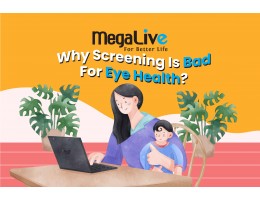
Why screening is bad for eye health ?

In this fast-changing world that we are in today, people want things to be done quick and always ready! People use various kind of devices and gadgets to speed up process of doing work. Initially, computer was built not for the sake of email and doing work, but it is actually to calculate and tabulate census for United States of America population since the population has grown bigger, it was started with a machine sort of punch card machine in 1880, where due to this the government save about $5 million in order to tabulate the census. From that sort of punch card machine, Alan Turing then presents another universal machine which capable of computing anything that is computable, the central concept of modern computer today is based on his ideas. Few years later, in 1939 Hewlet – Packard is founded by David Packard and Bill Hewlett in California, until today the computer that we are using is evolve from time to time, to the small smartphone on our hands that is capable of doing so many thing just like the bulky desktop (1).

All these technologies make us even more connected to devices like smartphone to connect with other people or to get things done. From paying bills, to designing, networking, sales, work, presentation, you name it all must be done using laptop, computer, smart phone, and the devices. The fact is everyone everyday is looking at the screen for long time, when the recommended hour to look at the screen is only 2 hours per day (2).
Why screening is bad for eyes?
White light that we see from sun and electronic devices is a combination from red, orange, yellow, green, blue, indigo, and violet light. Each of these lights has different energy and wavelength. Rays on red have longer wavelength and less energy, while the blue rays have shorter wavelength and more energy. Light that looks white can have a large blue component, which can expose the eye to a higher amount of wavelength from the blue end spectrum (3).
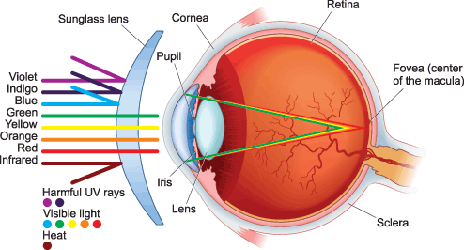
Sun also have this blue light, but blue light exposure from screen is small compared to exposure from sun, thus why makes it bad for eyes. Furthermore, screen exposure has closer proximity to eyes and the time spent looking at screen is longer than at the sun (3,4).
Almost all visible blue light penetrates the eyes through cornea, lens and reaches the retina, due to this, it makes eyes prematurely aging.
Blue light from computer screens and digital devices can decrease contrast leading to digital eyestrain. Fatigue, dry eyes, bad lighting, or how you sit in front of the computer can cause eyestrain. Symptoms of eyestrain include sore or irritated eyes and difficulty focusing. Apart from that, studies also suggested that continued exposure to blue light over time could lead to damaged retina cells. This condition can cause problems like age-related macular degeneration (4).
Macular degeneration is the result of photoreceptor cell death in the retina. The function of the photoreceptor cells is to capture visual images and signal them to the brain using a molecule called retinal. Retinal, which is produced by the eye, is triggered by blue light and causes various chemical reactions. These reactions within the eye can be poisonous to the photoreceptor cell molecules rendering them damaged. When these photoreceptor cells die, there’s no regeneration (4).

What can we do?
With the current work requirements where most of work and stuff need to be accomplished through the usage of electronic devices thus screening is very much essential, makes it even harder to take care eyes from the screen. No! There are actually ways to take care of your eyes still, apart from consume food that is high with antioxidants and vitamins that can improve eyesight condition you may also try and practice the tips below (5)!
